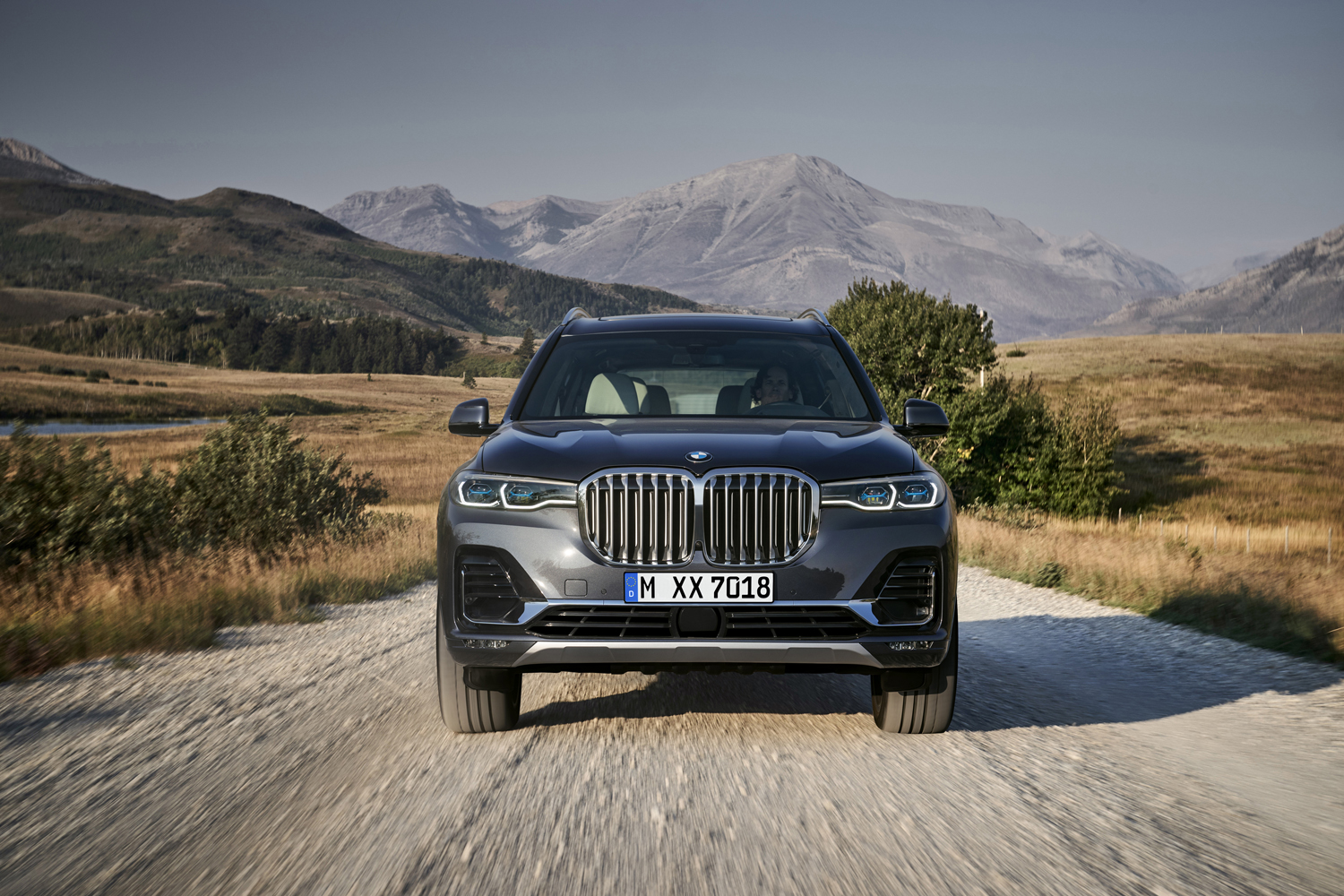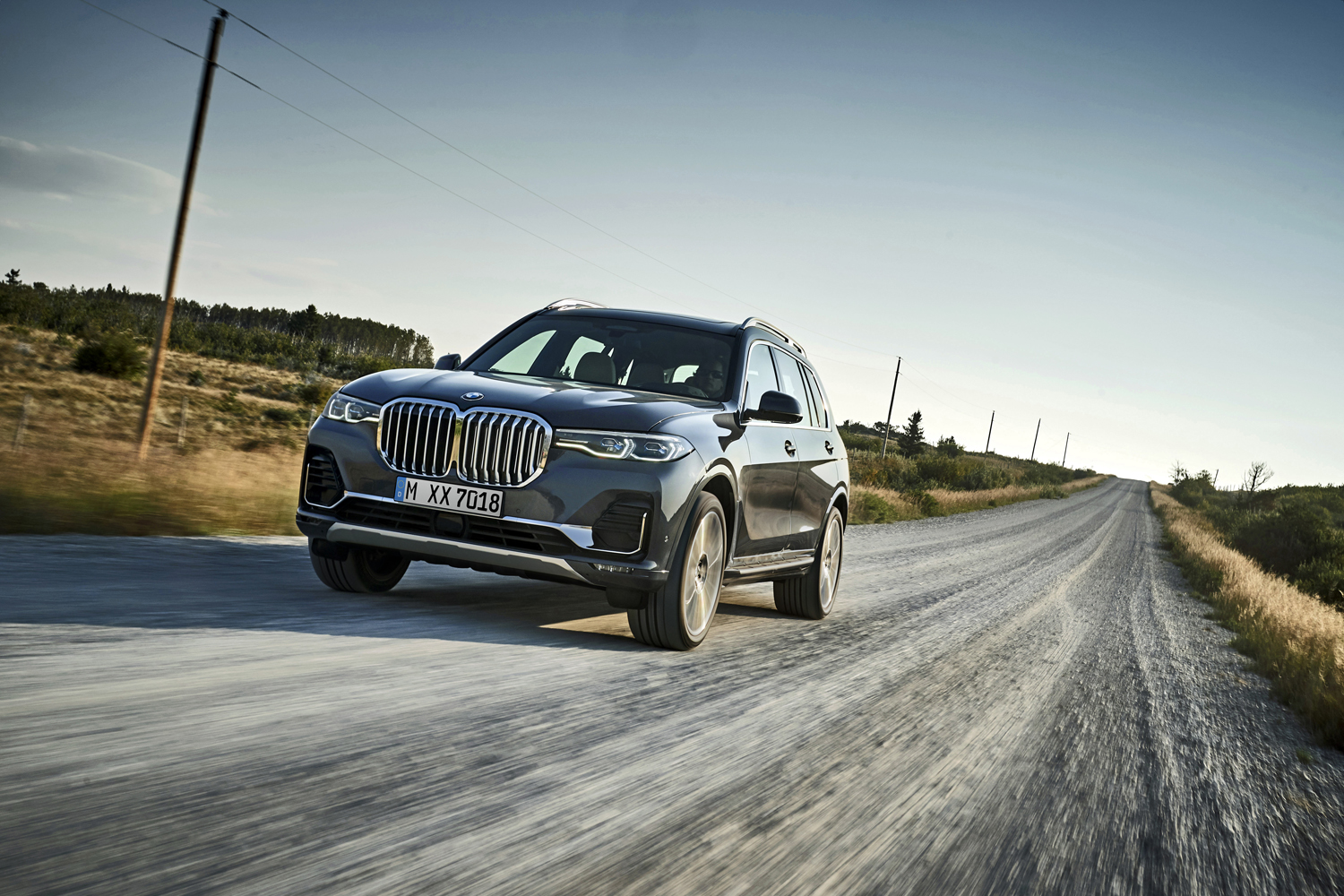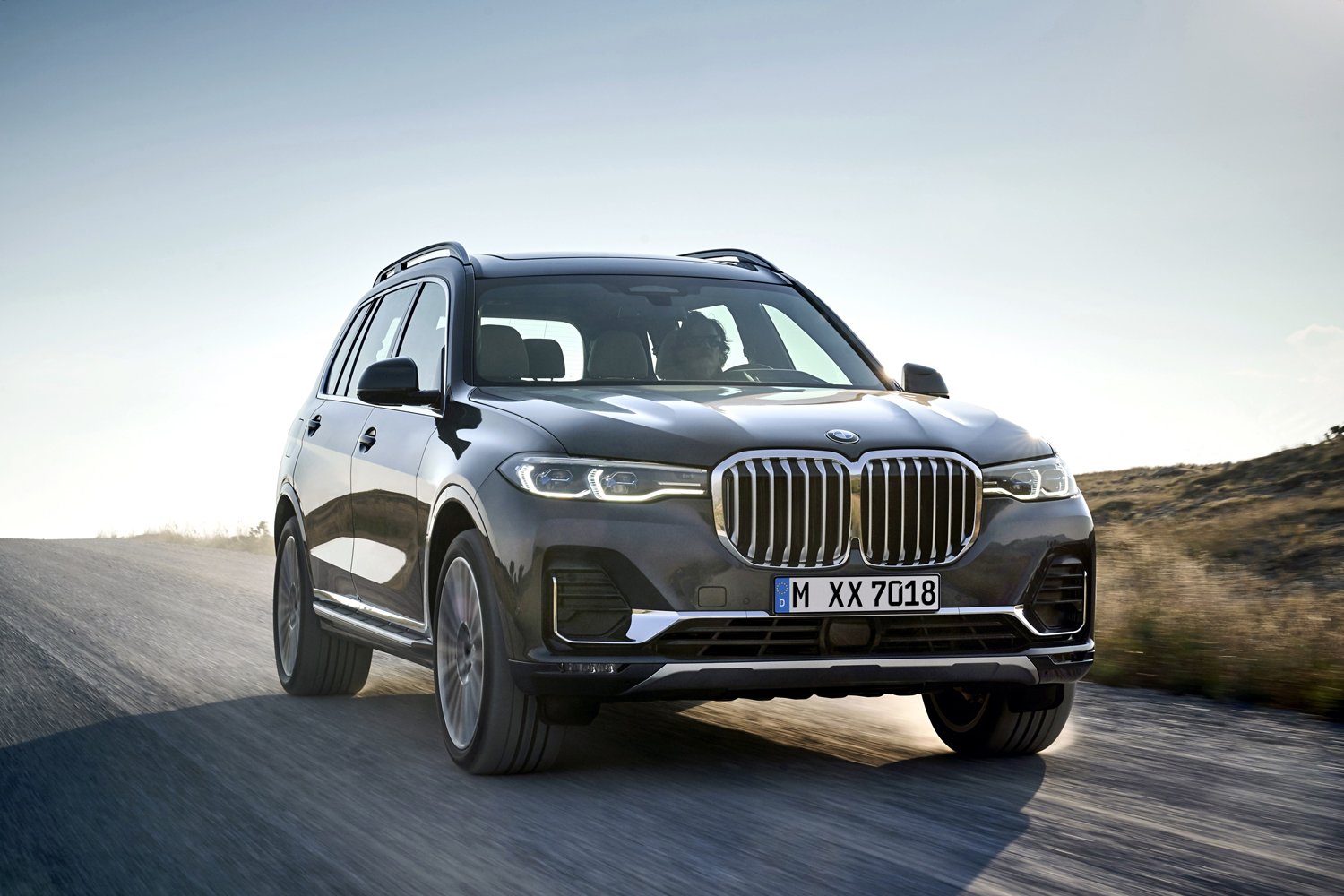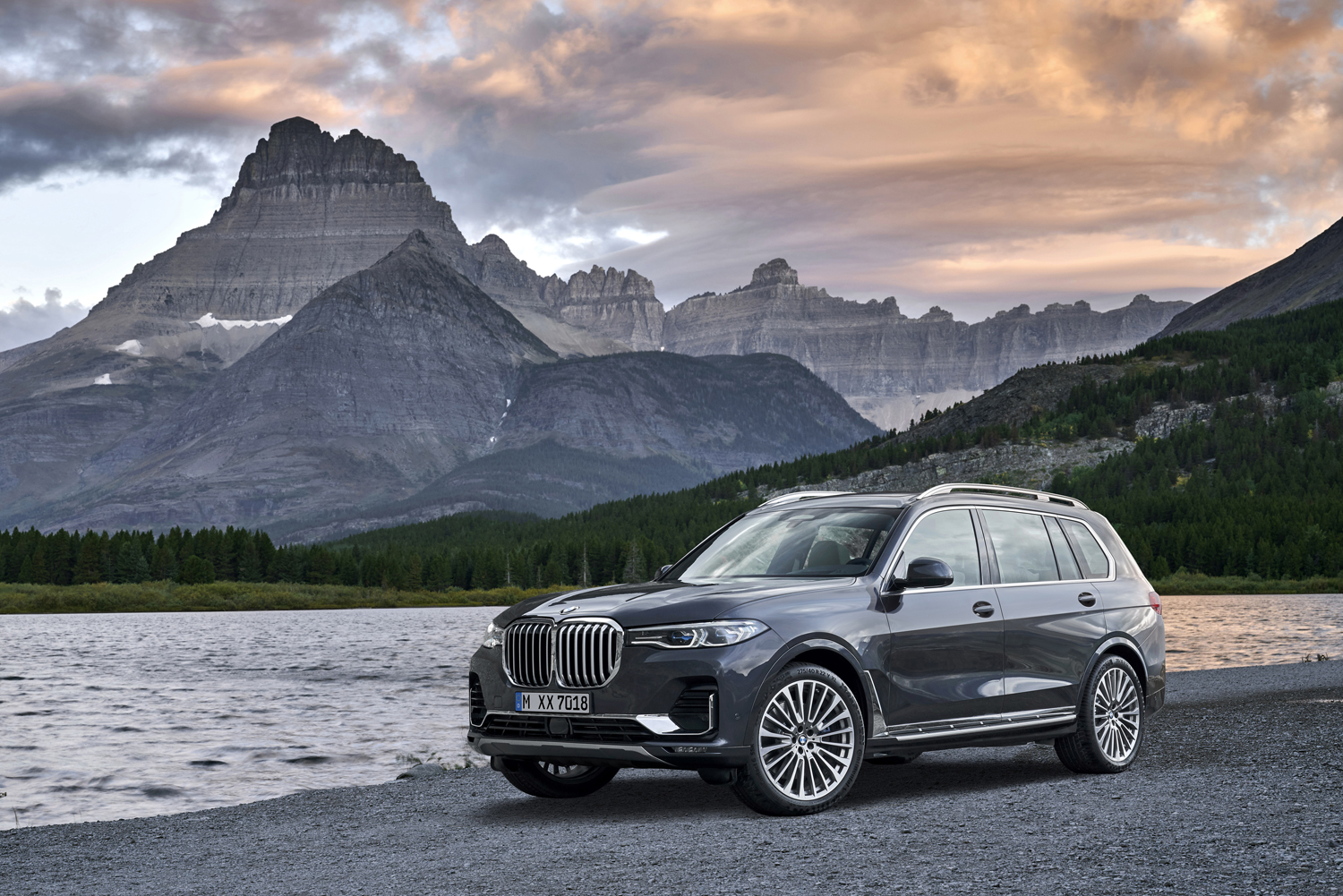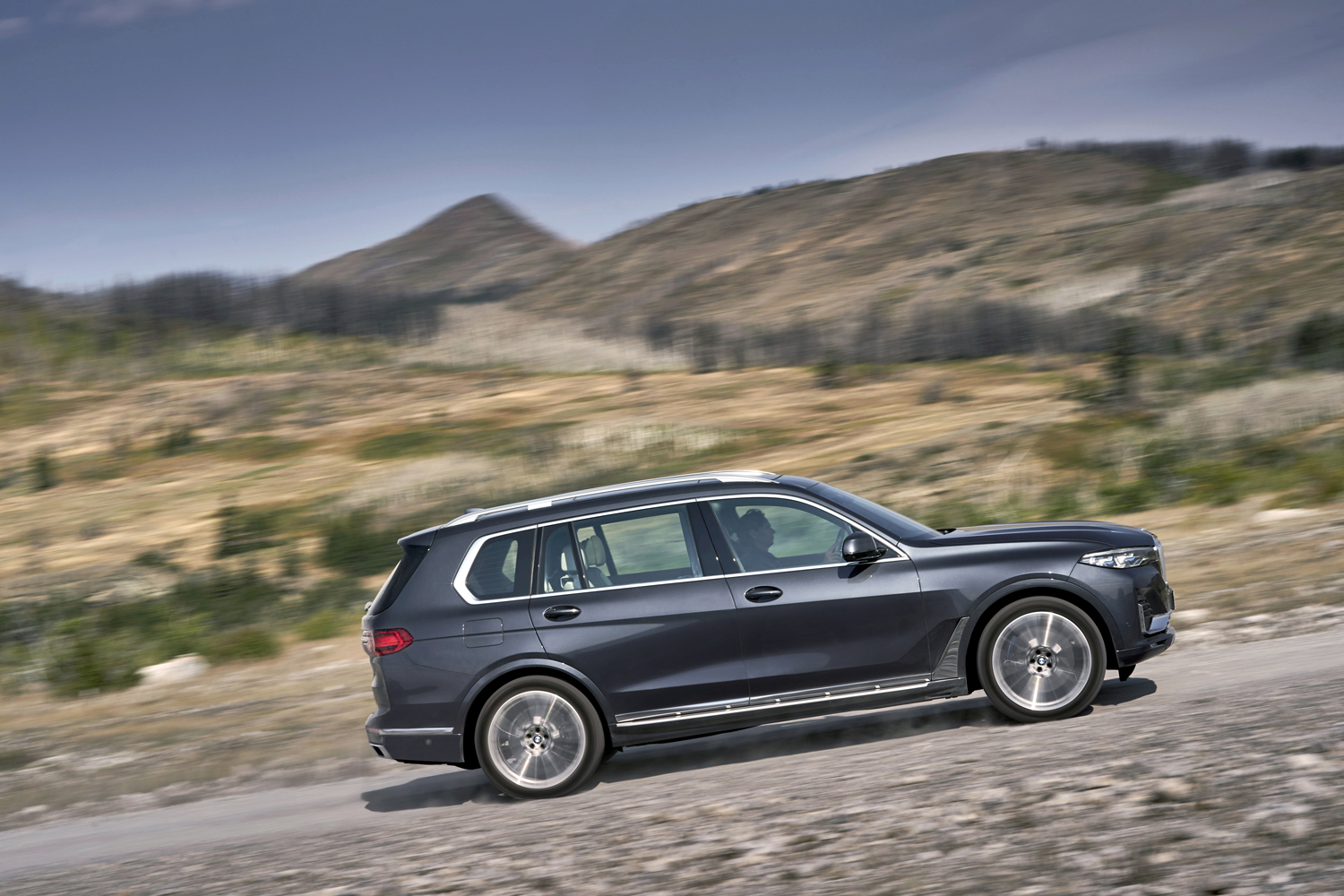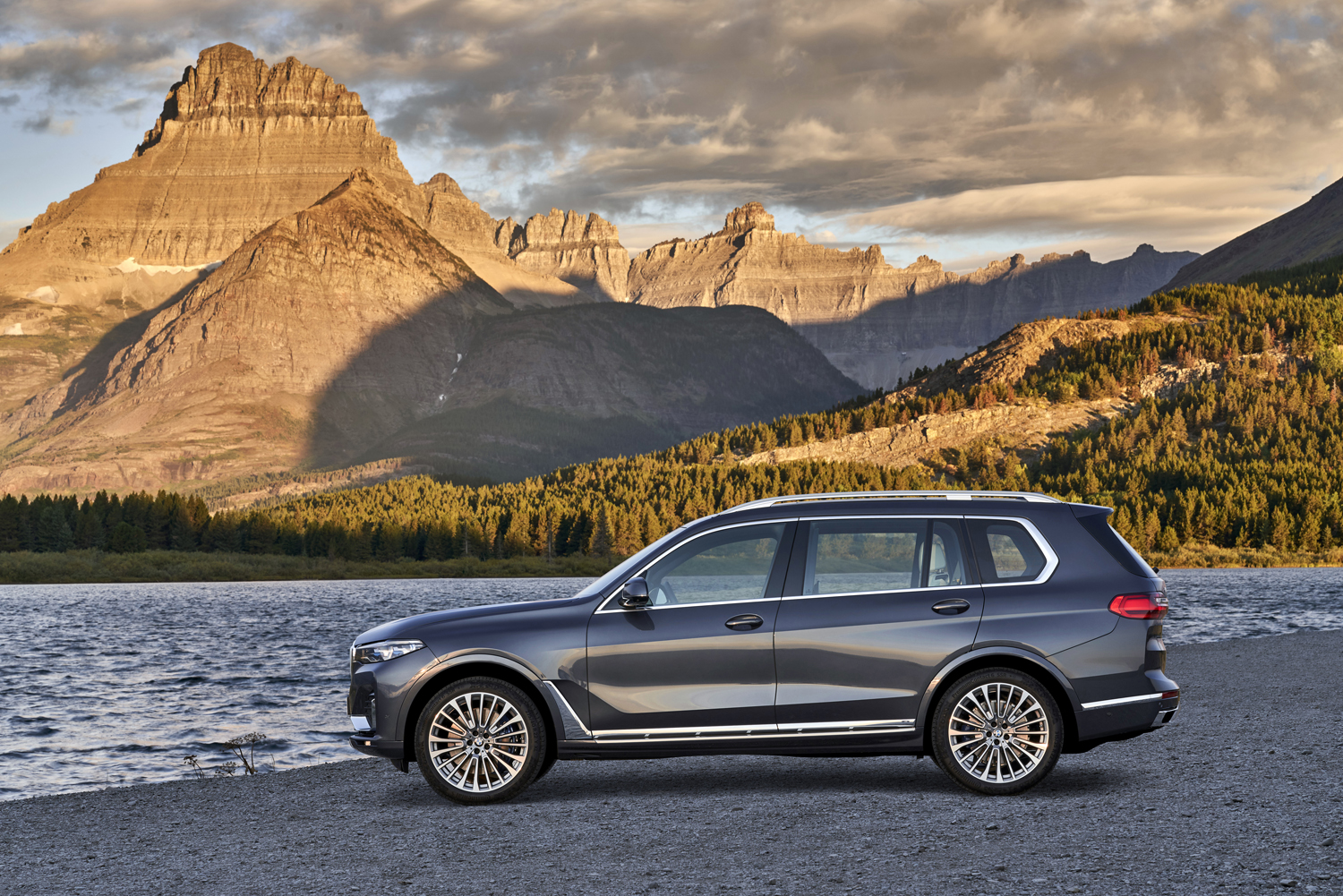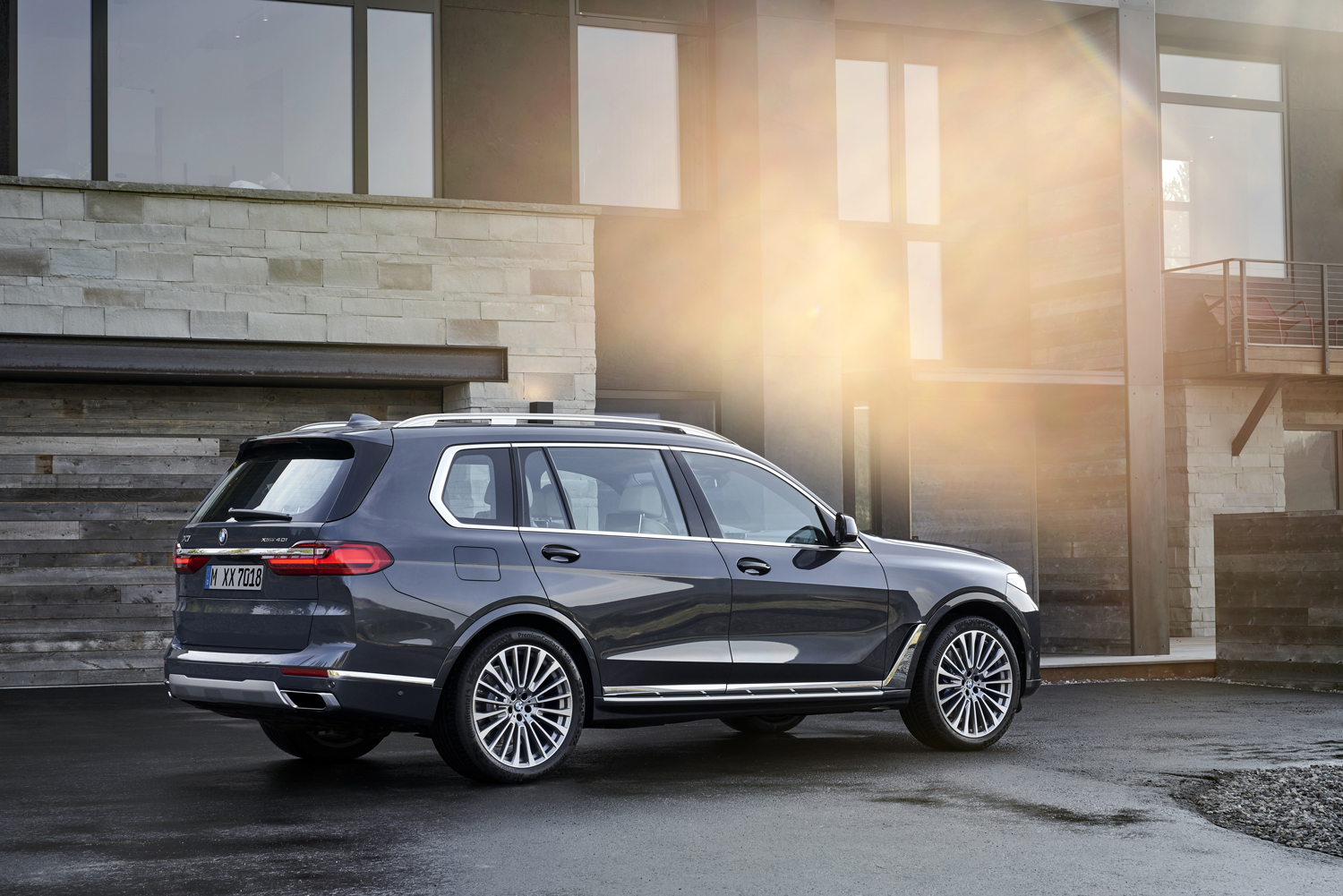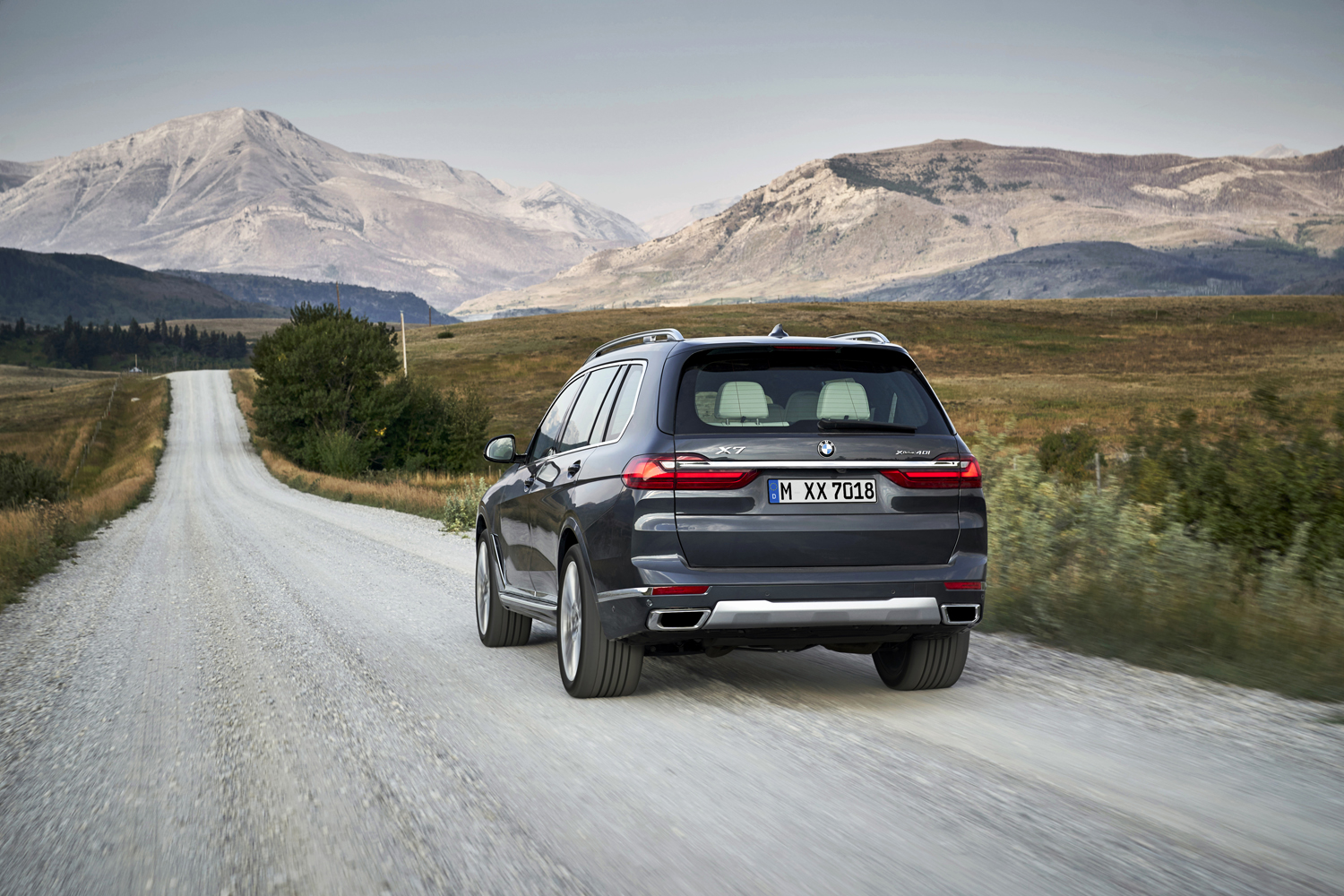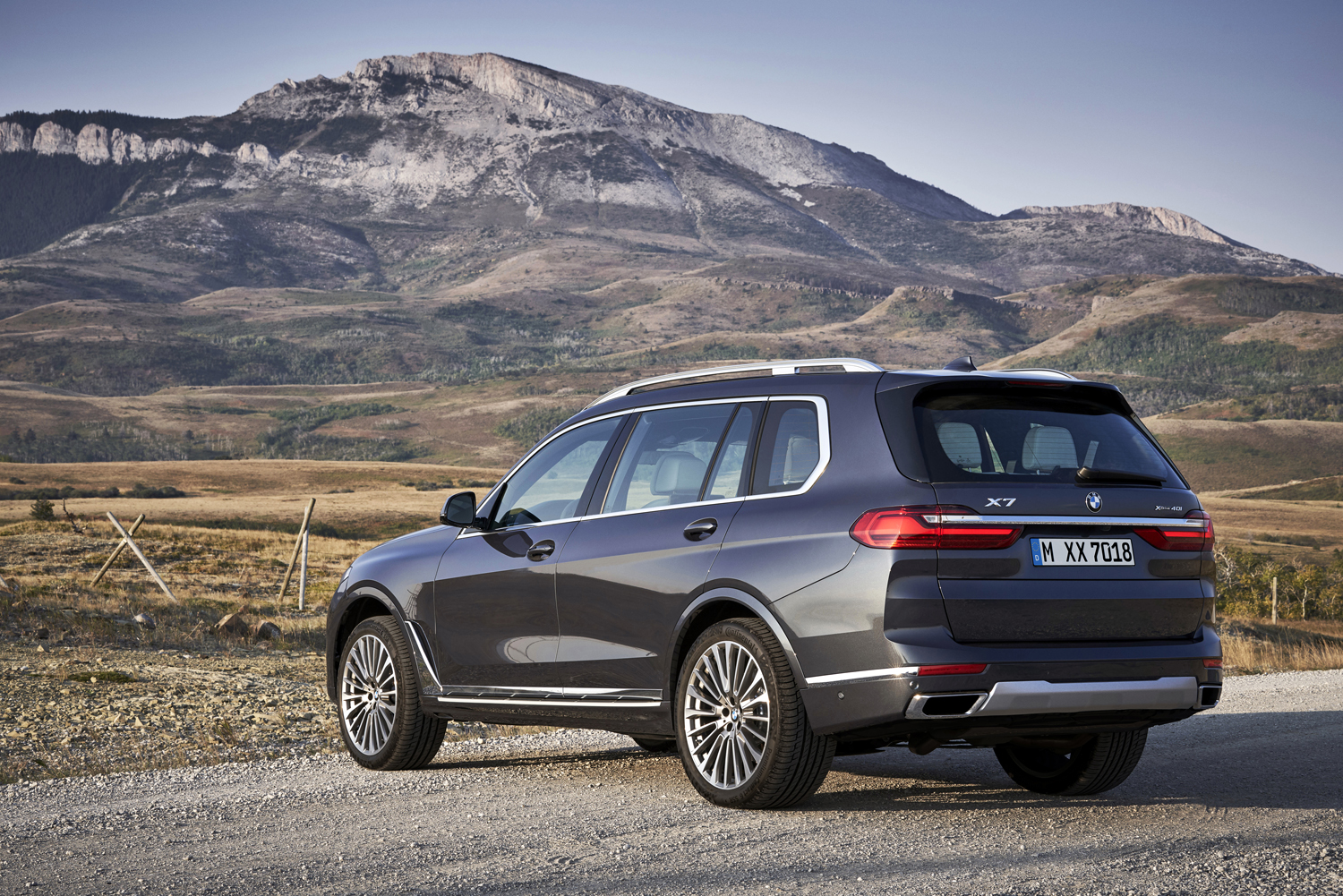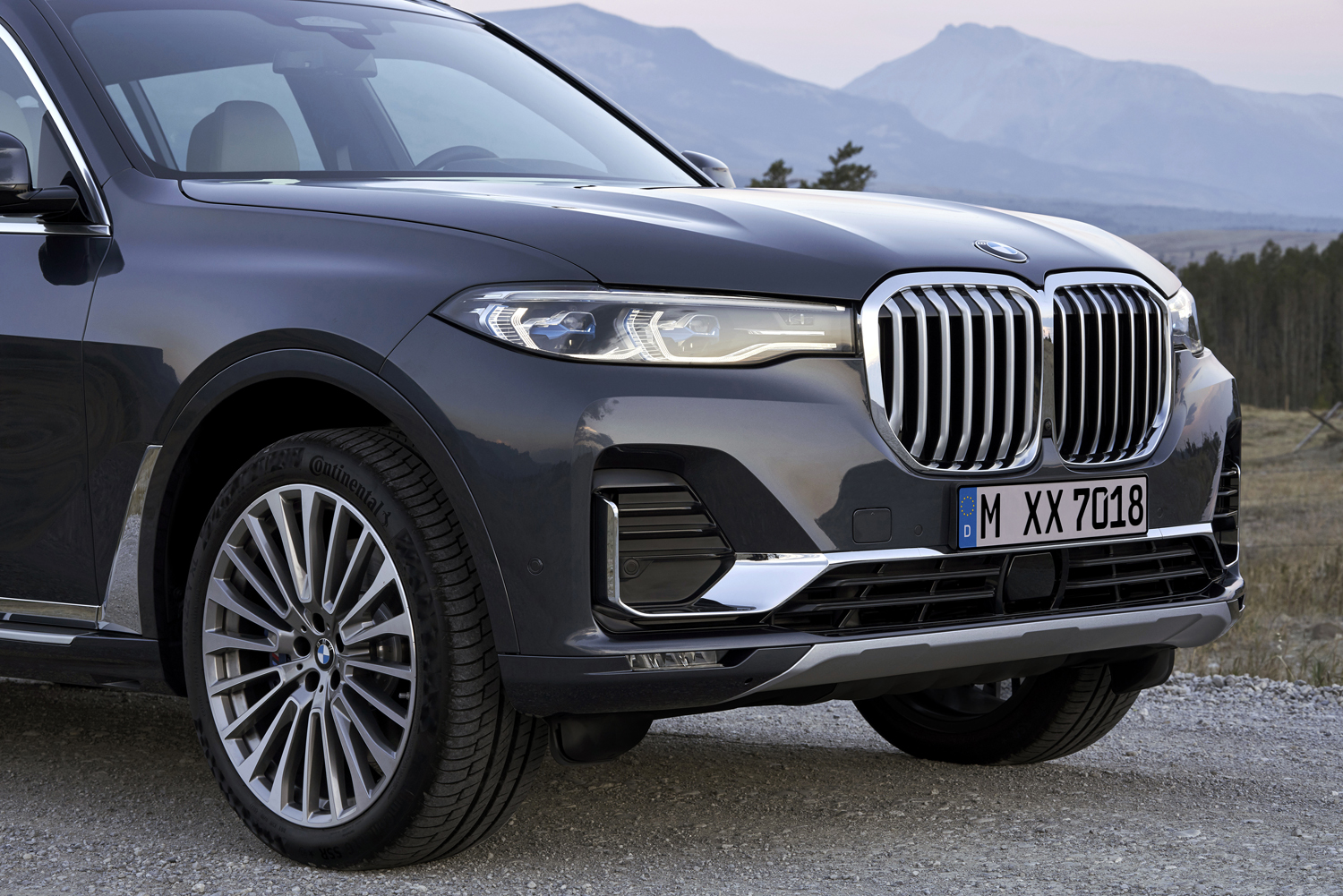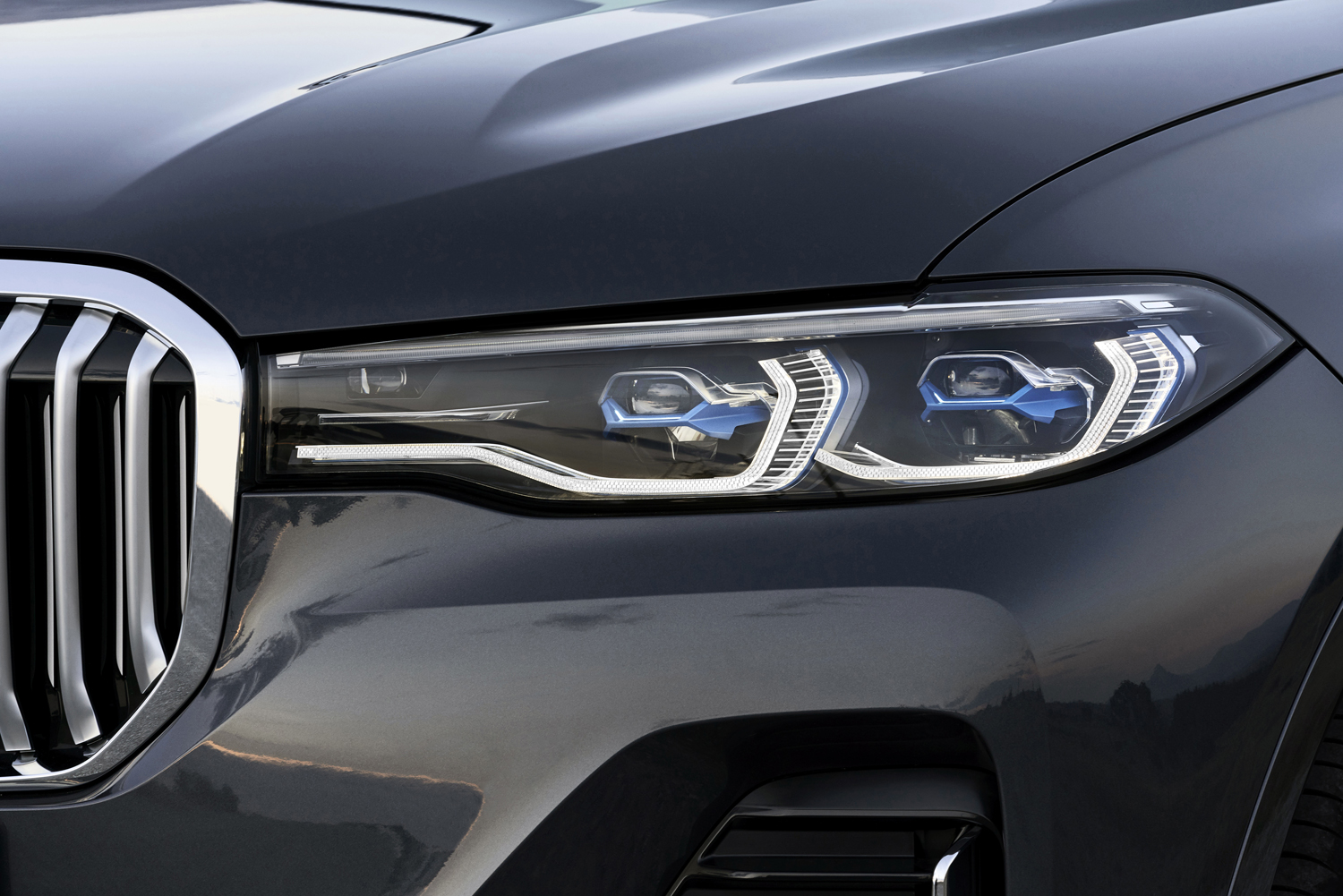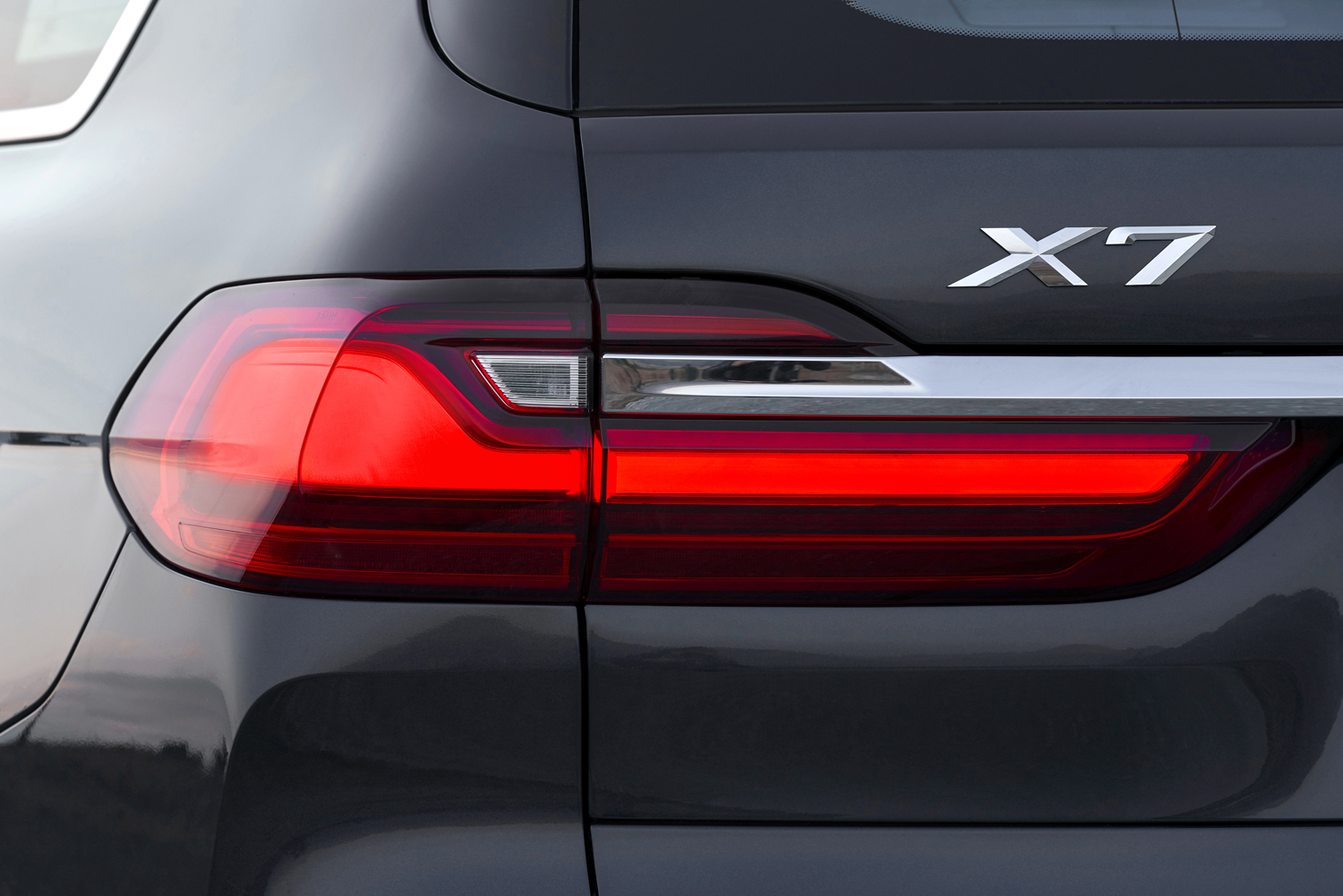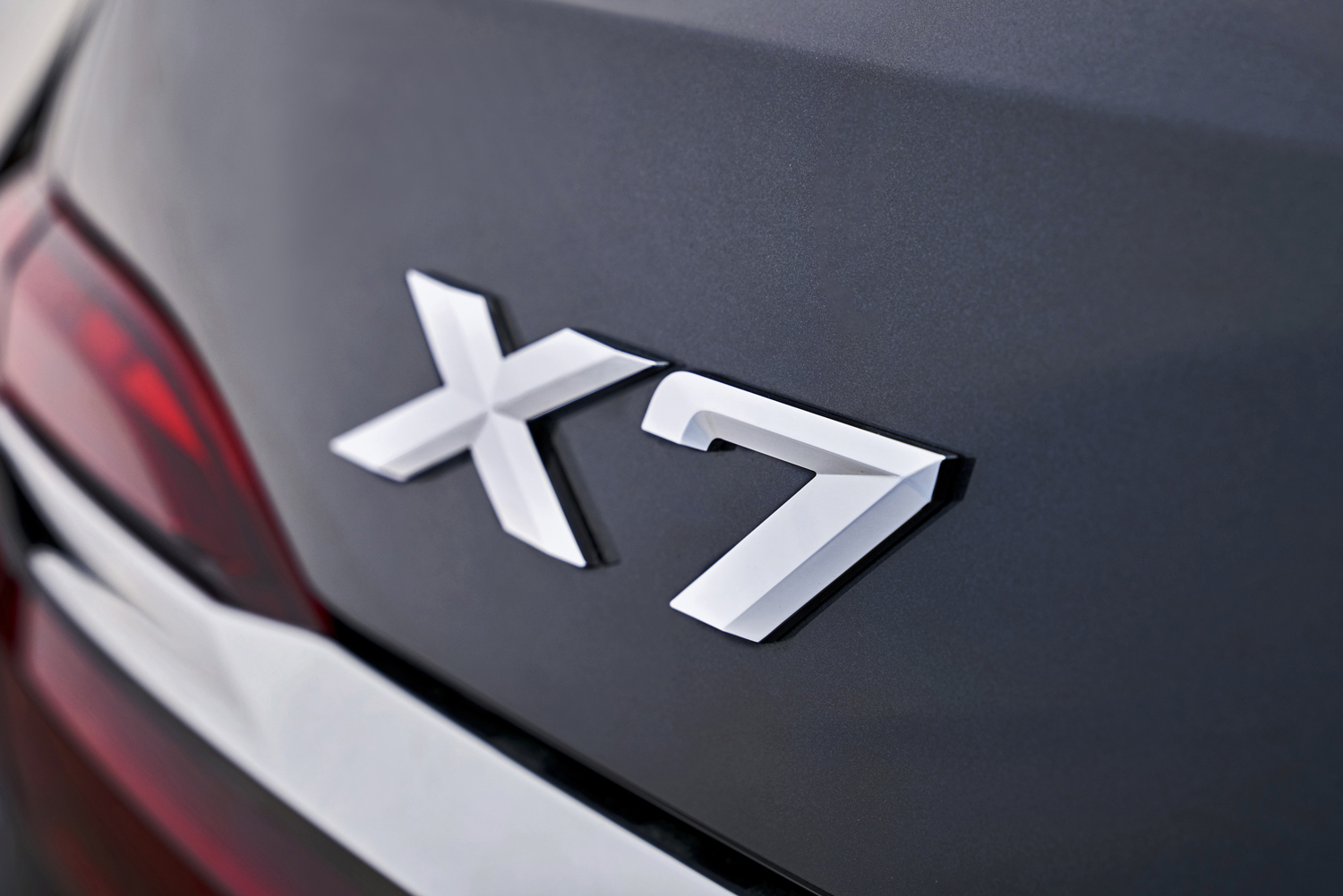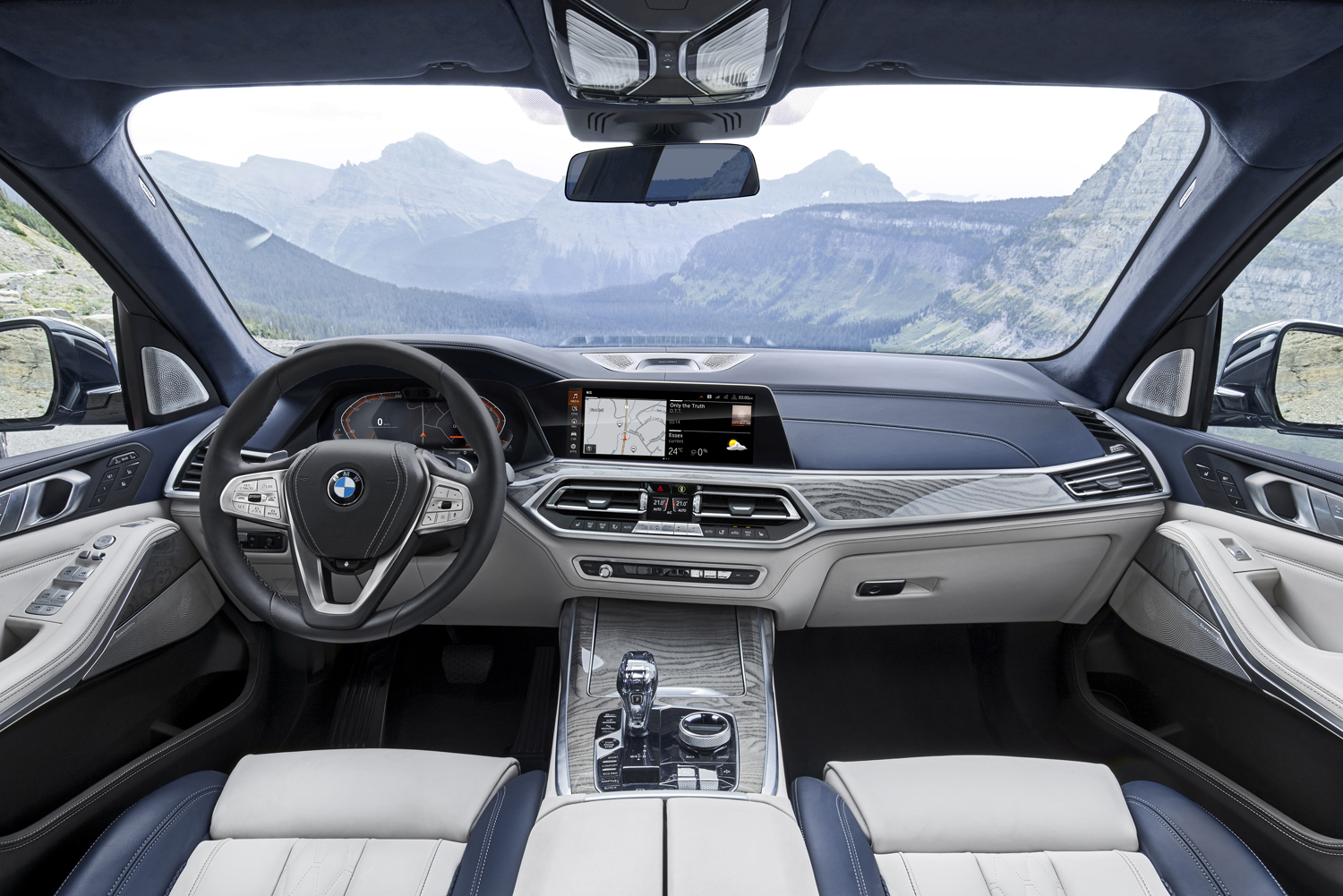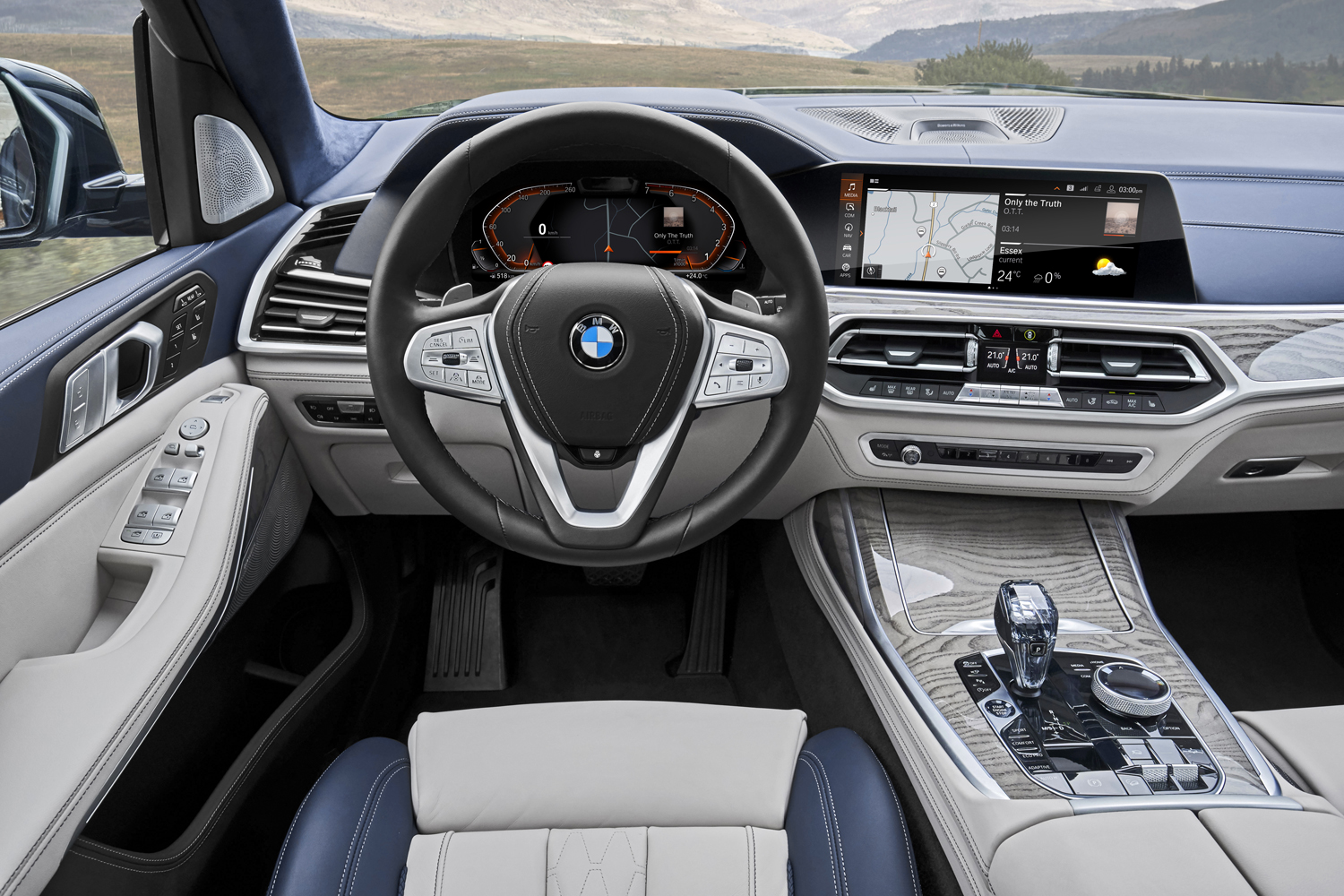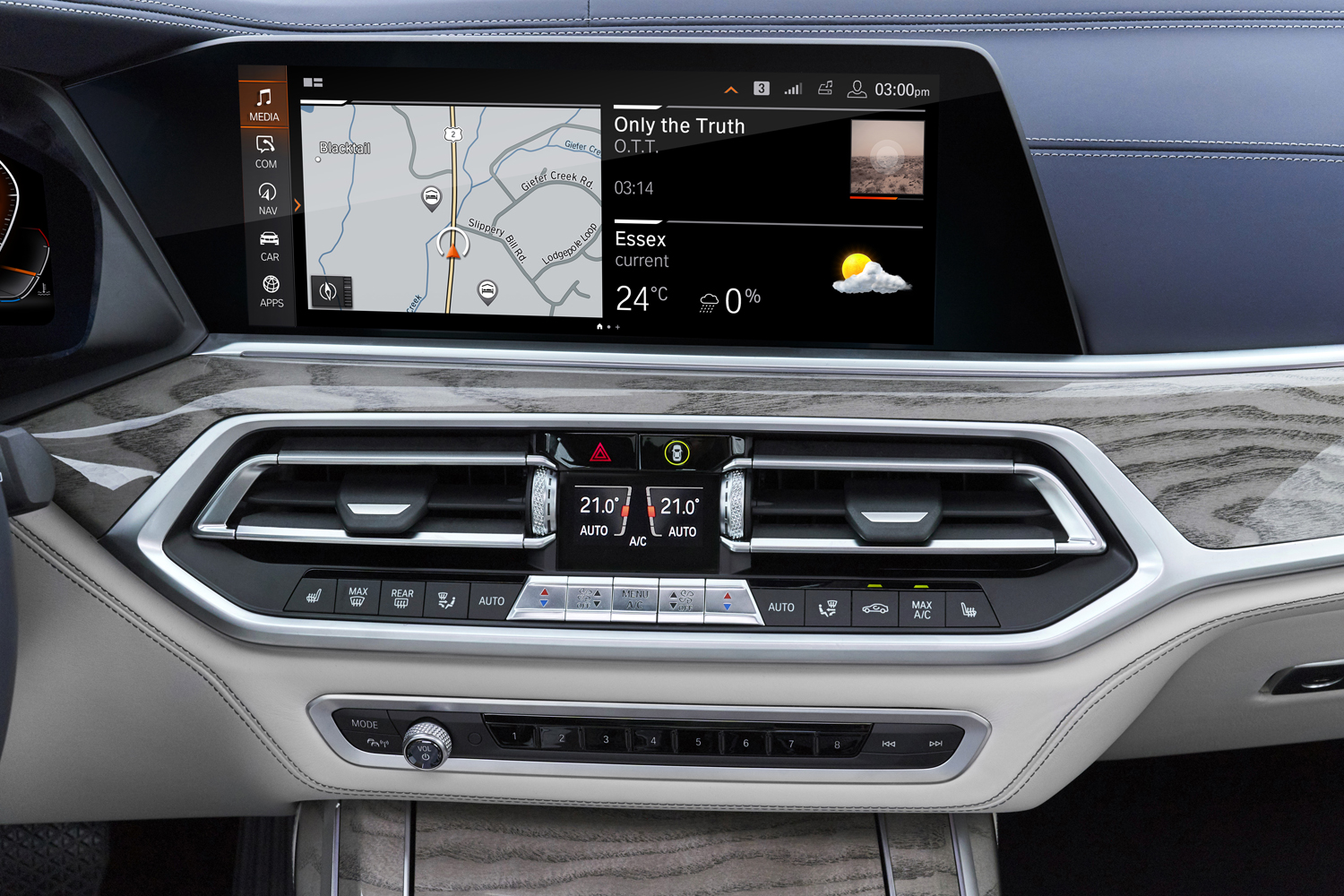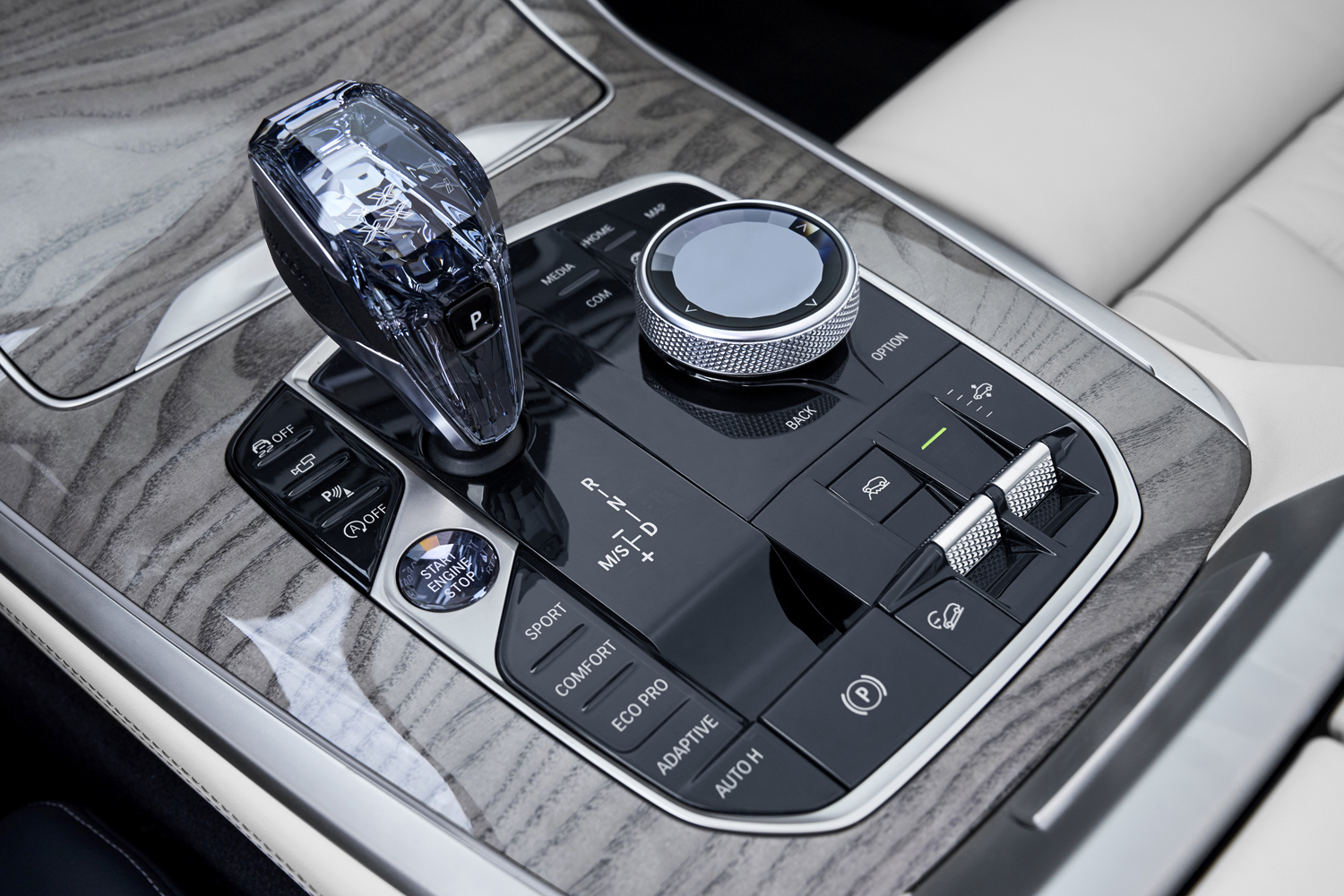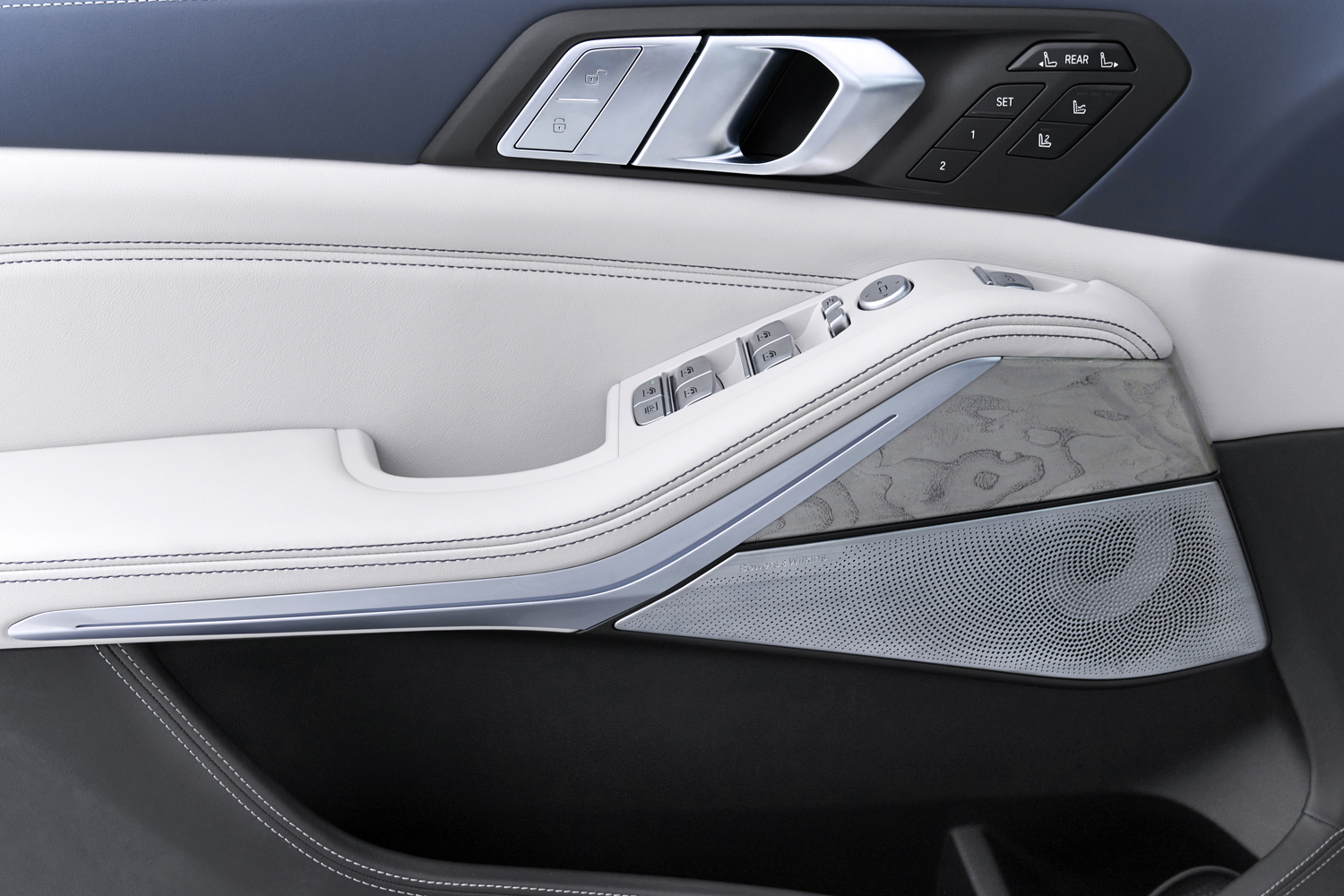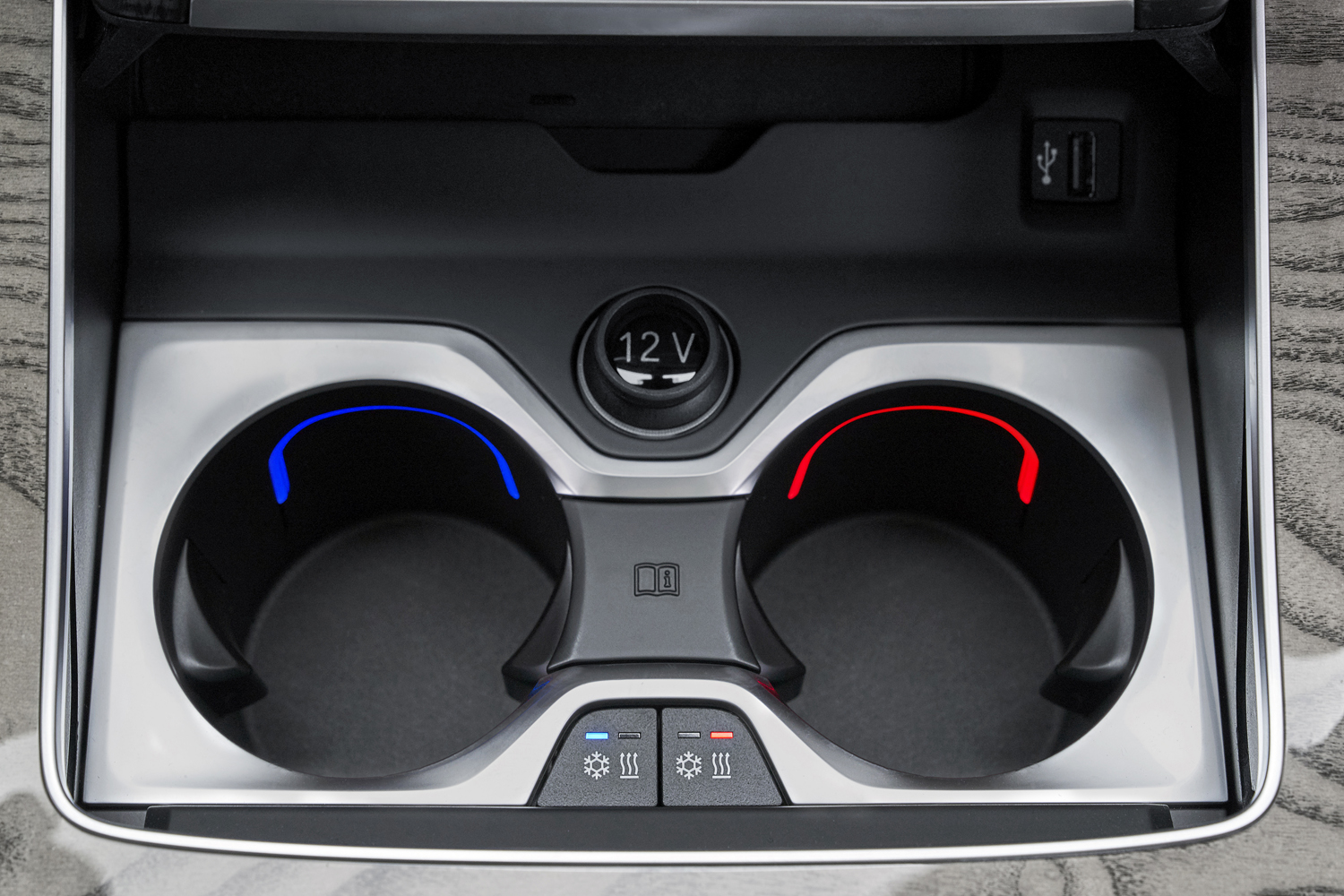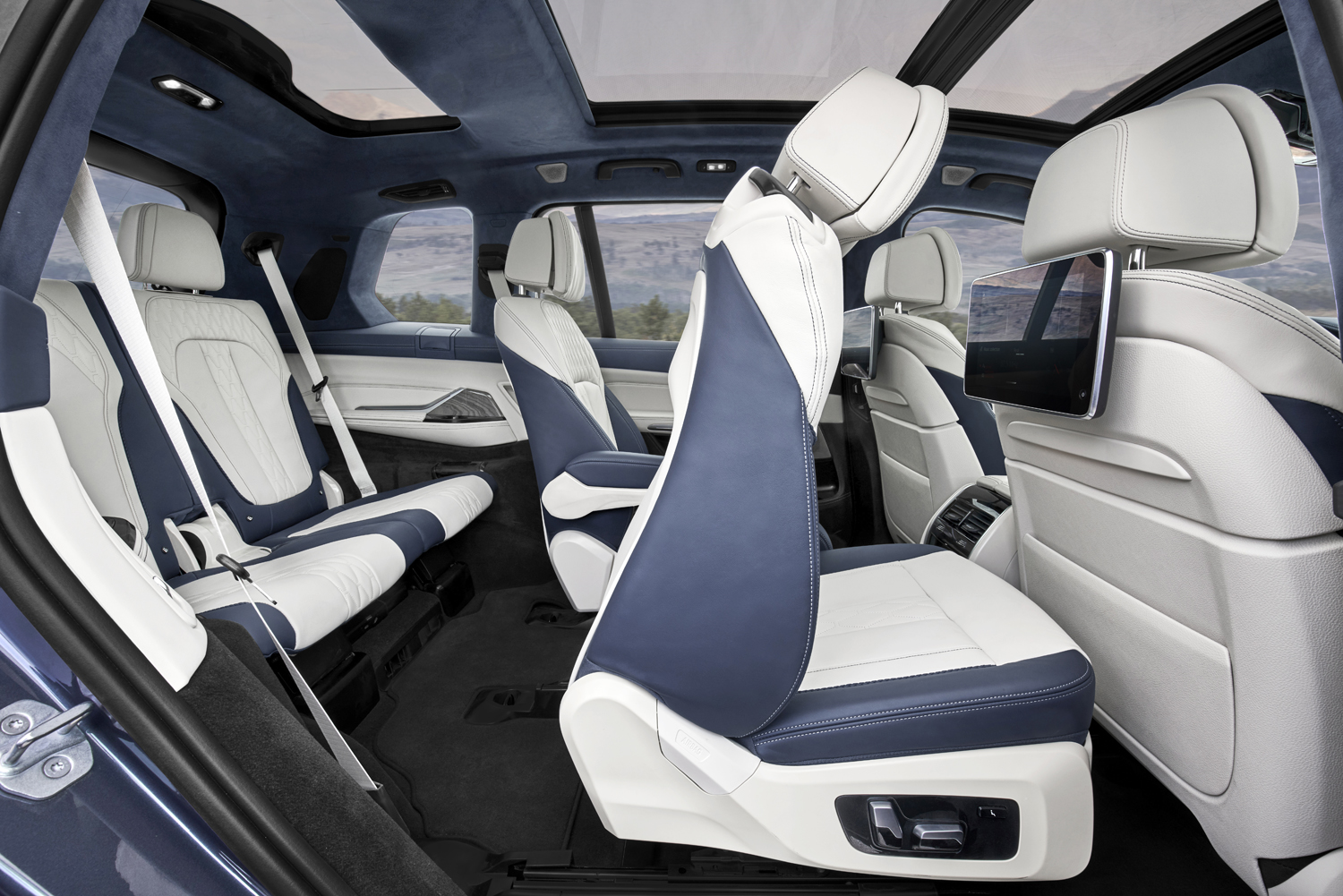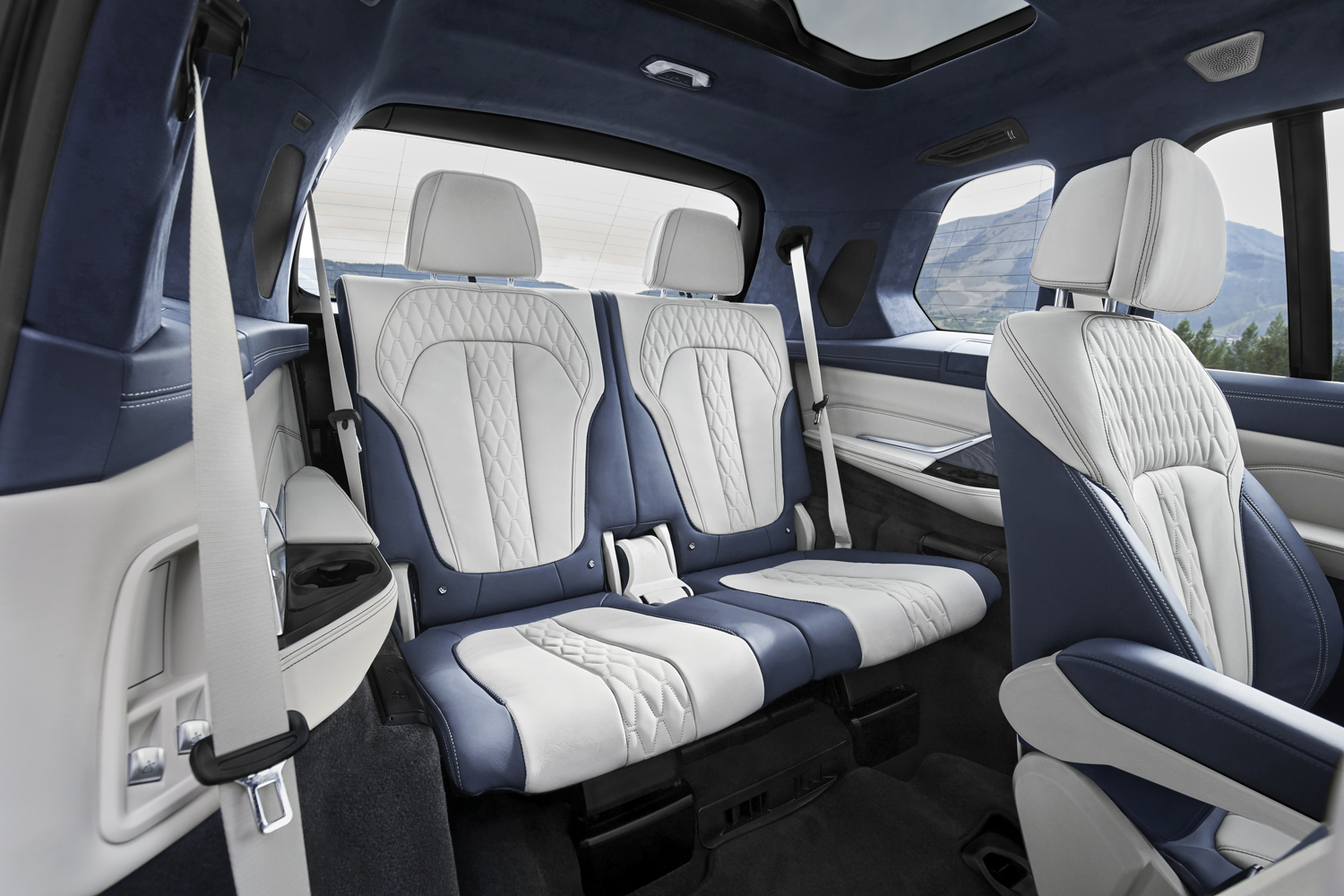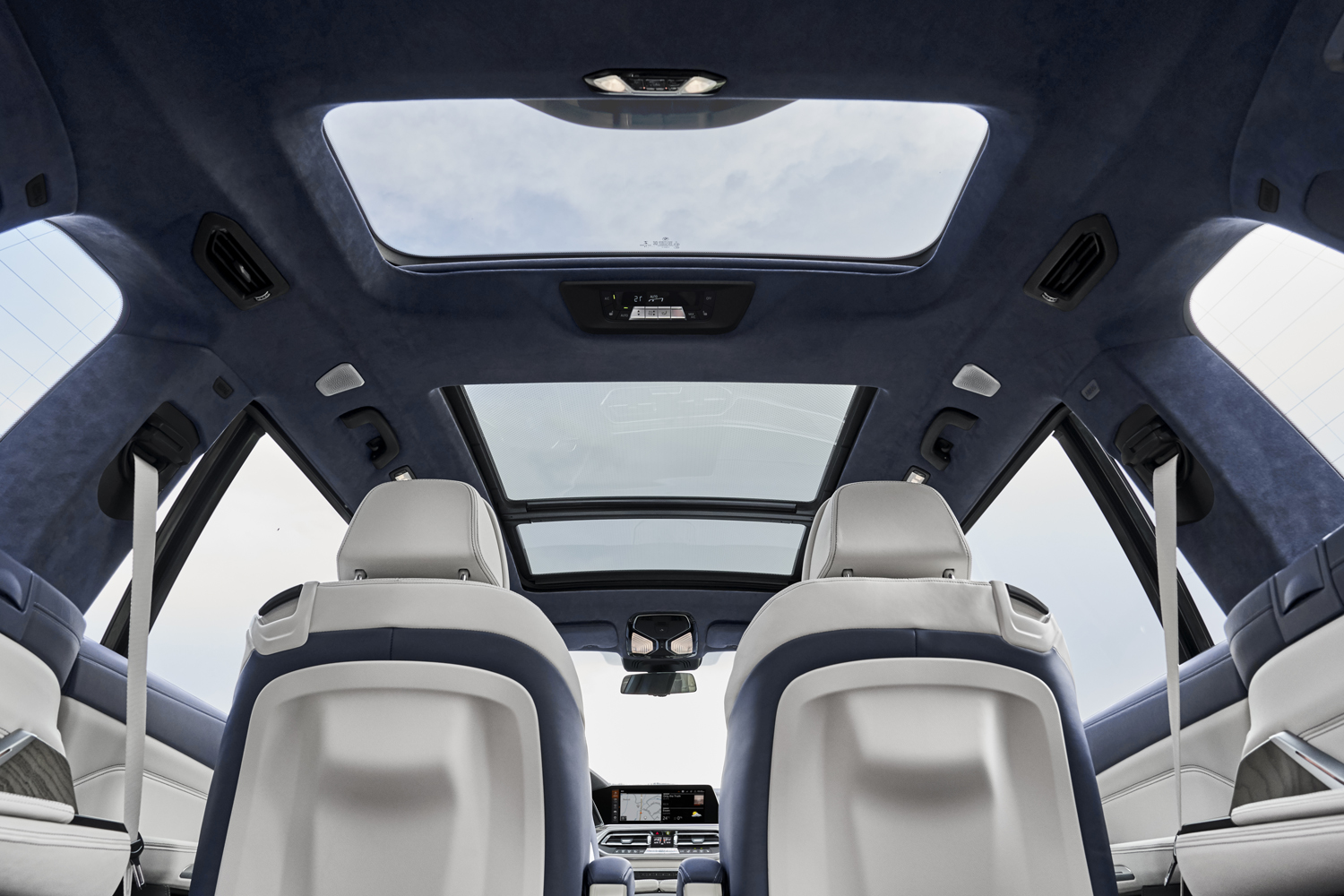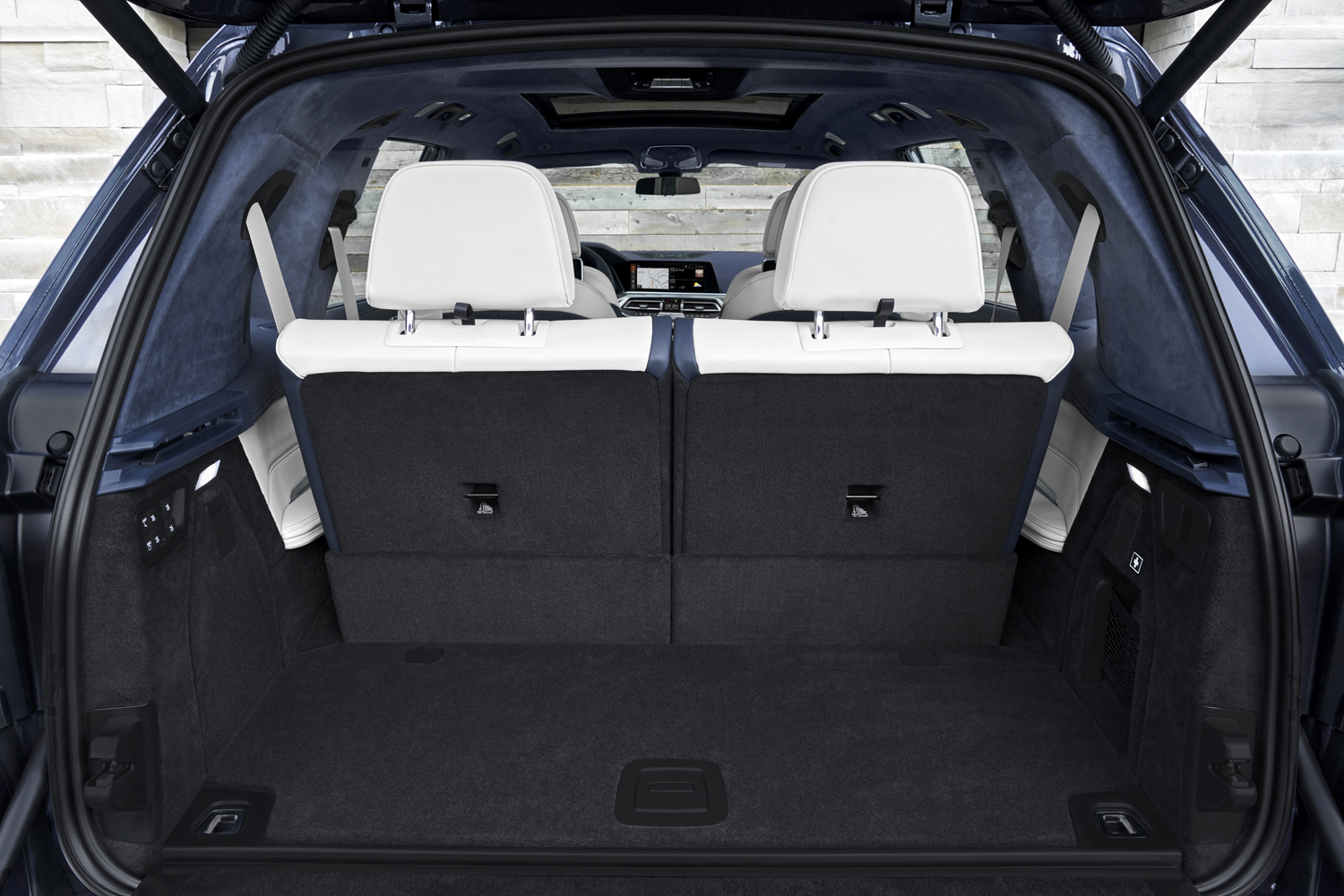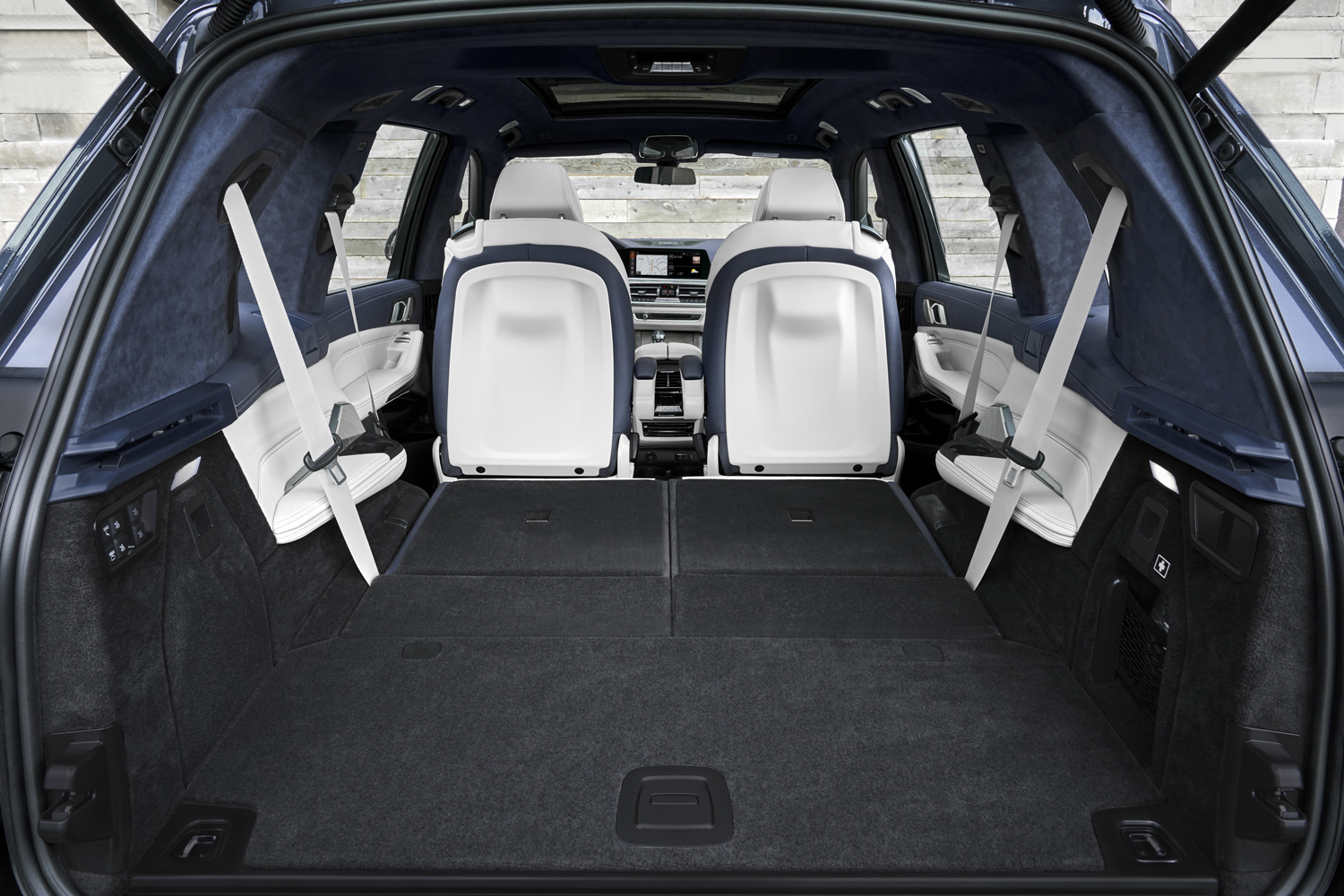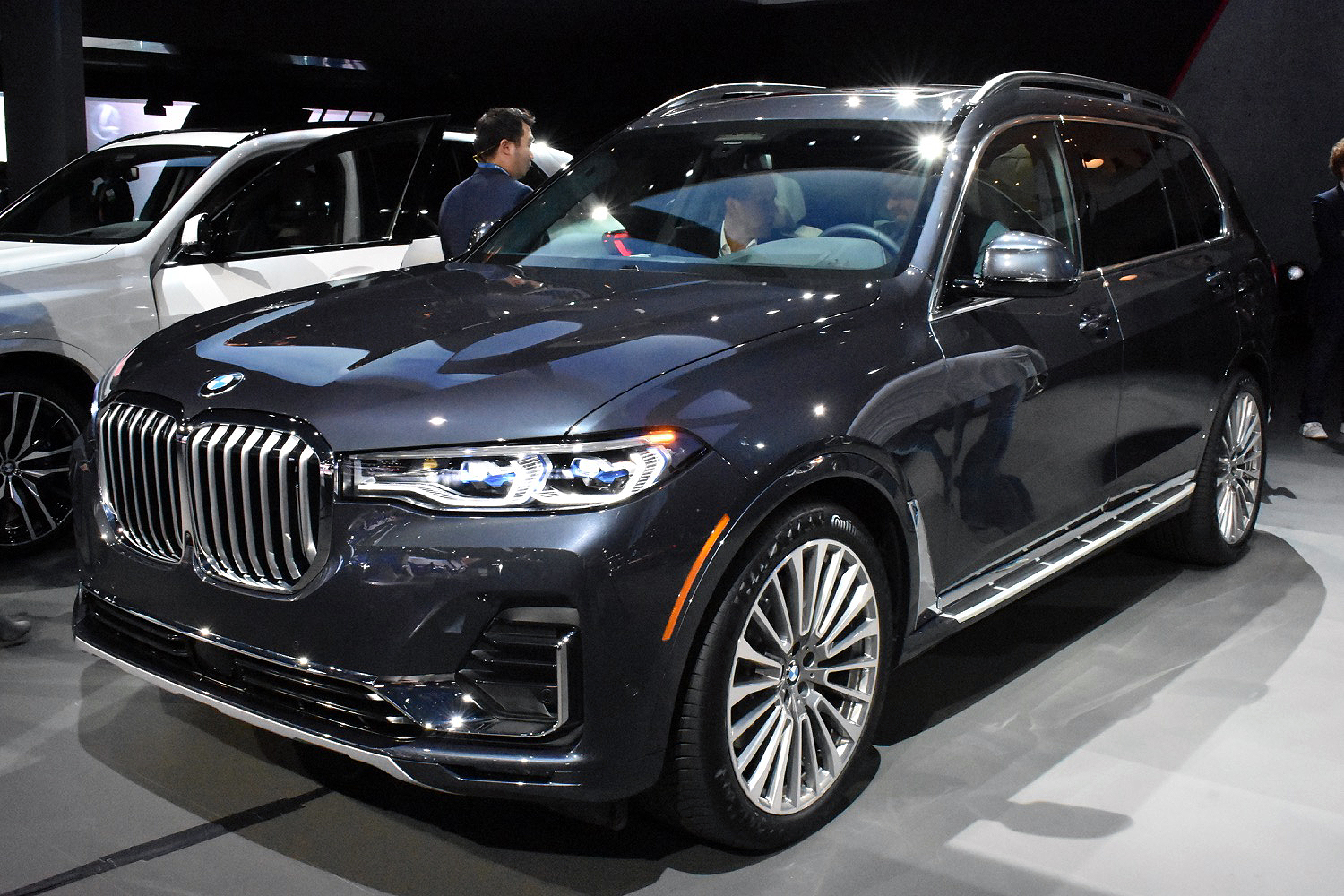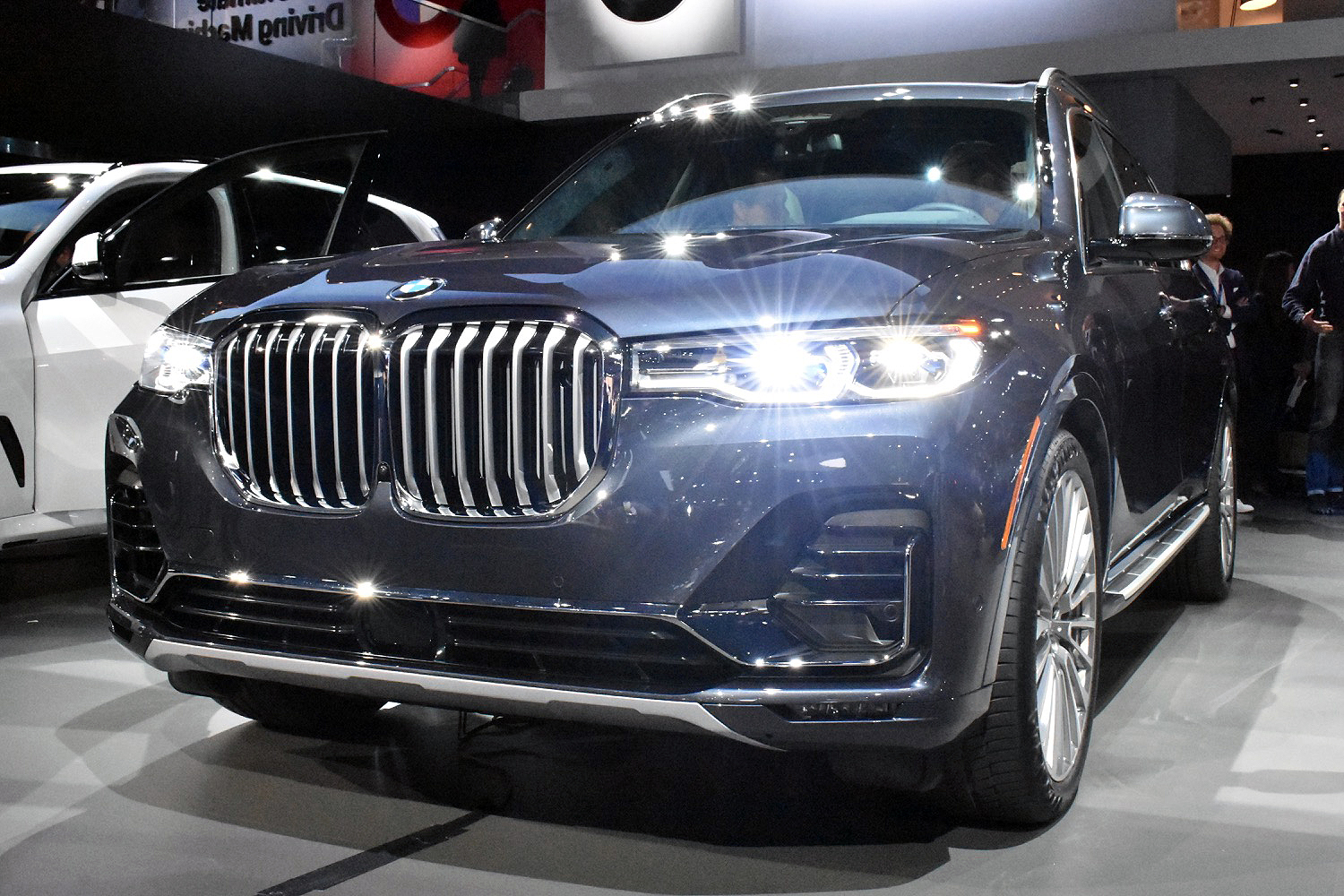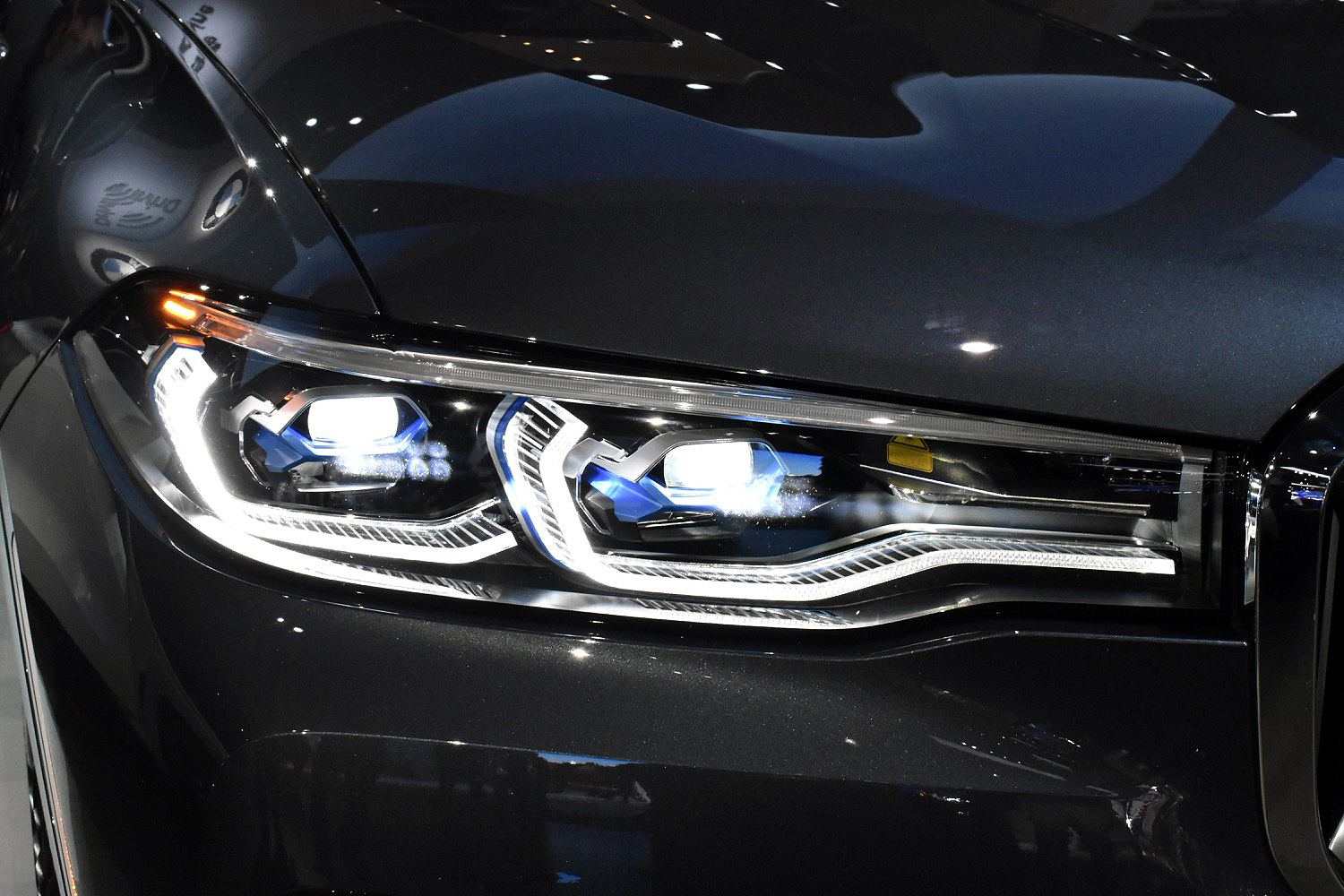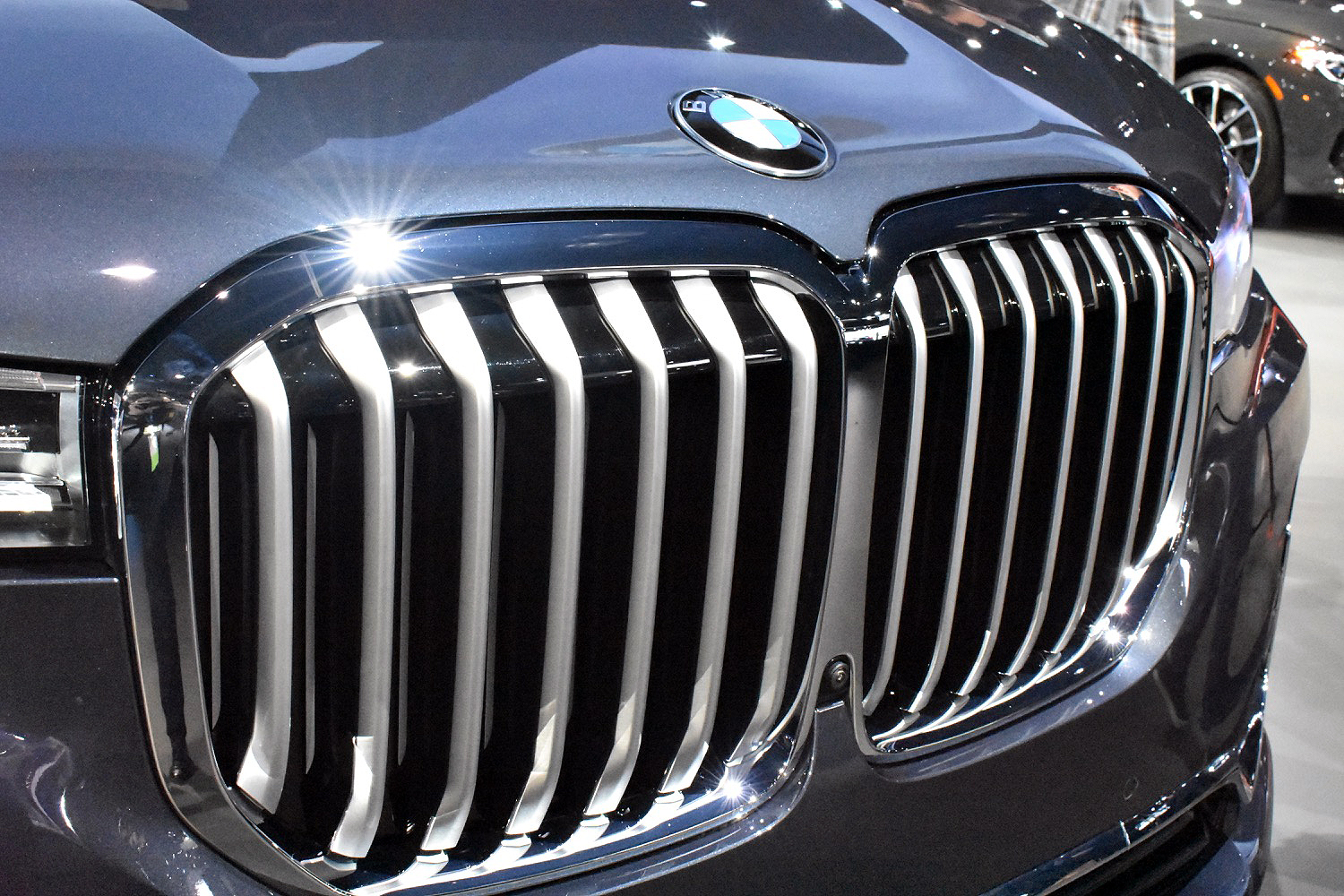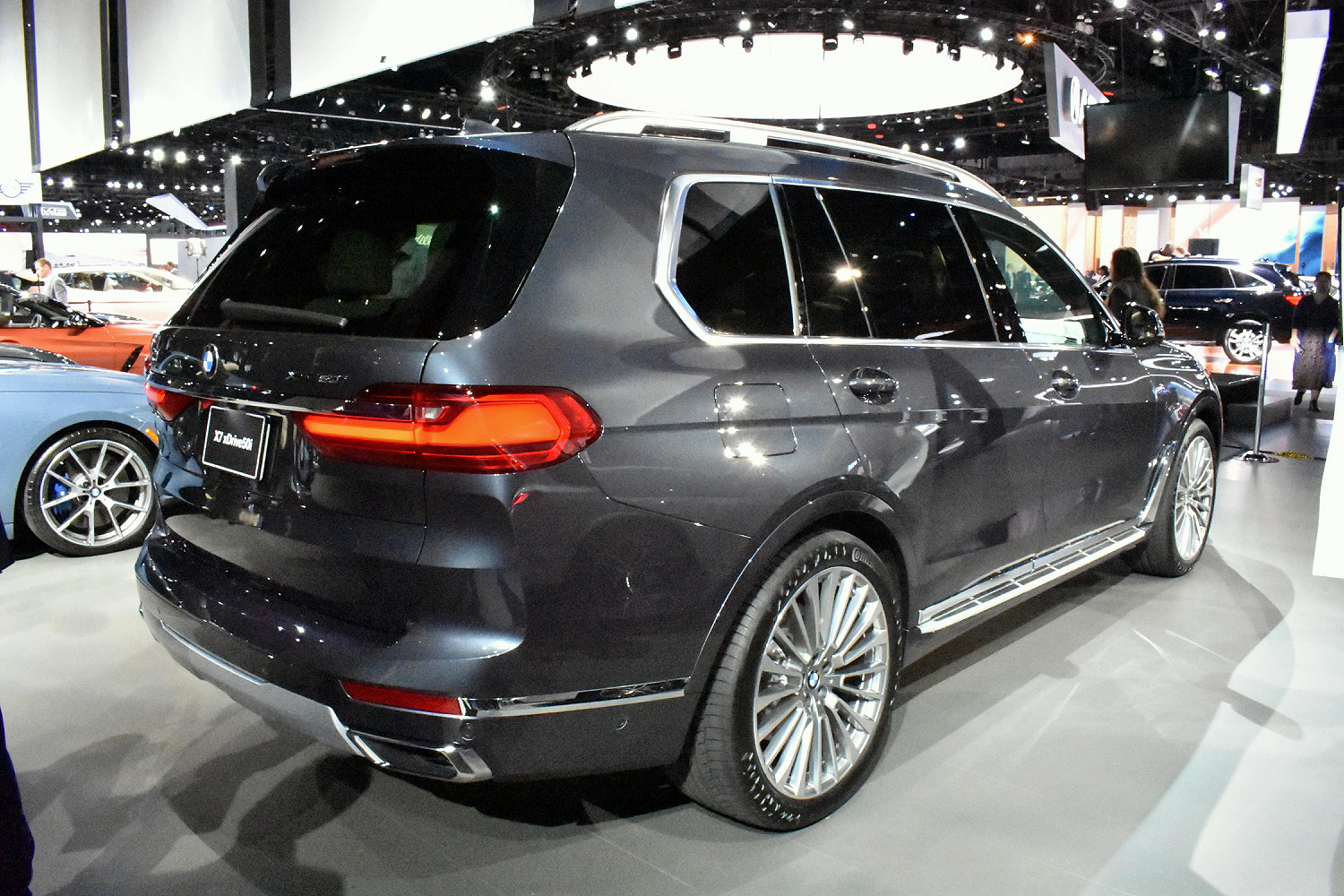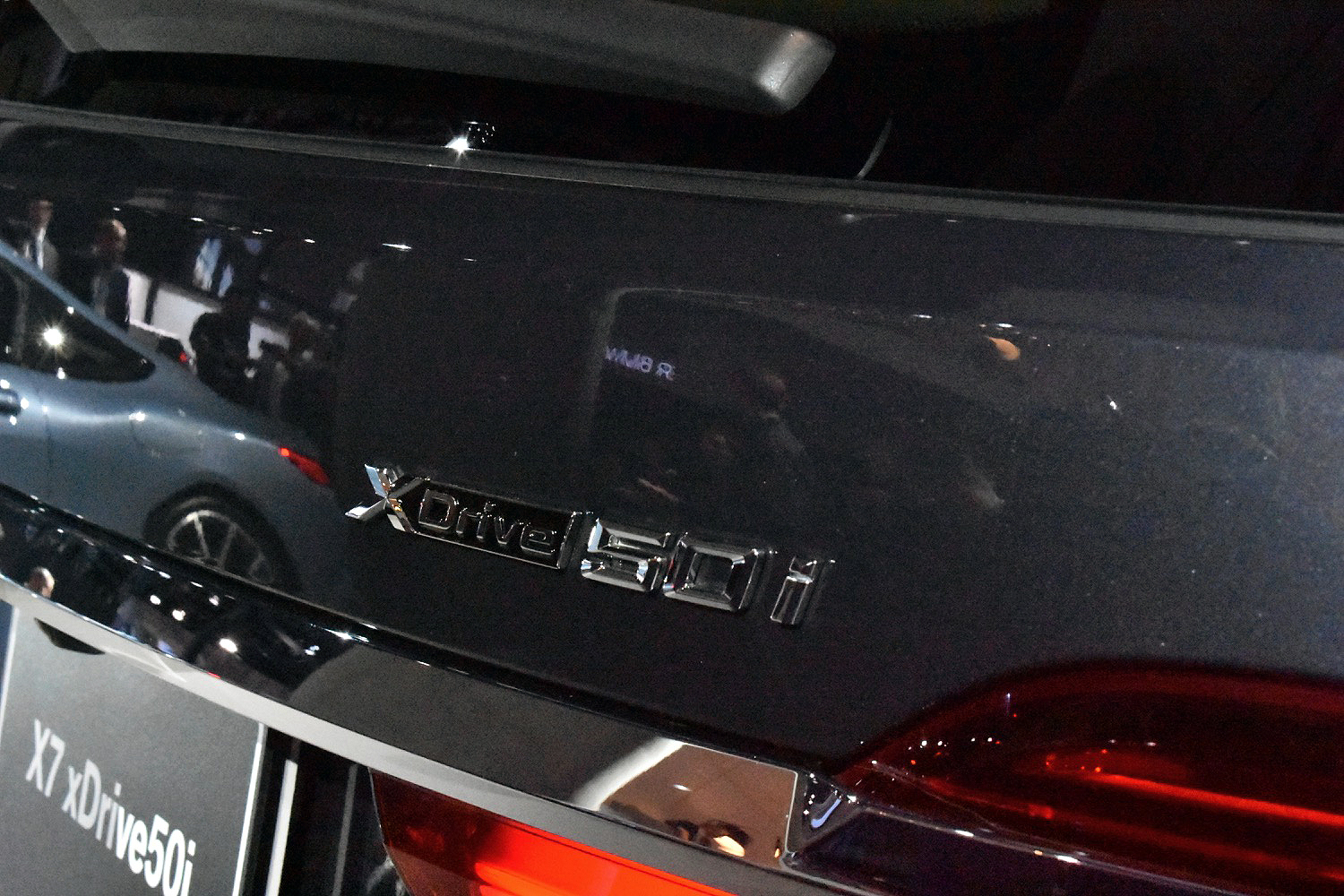Twenty years ago, the public and the press opined that the idea of a BMW SUV was interesting but wrong. Today, it’s par for the course; some of the brand’s best-selling models are SUVs. That lineup is growing again at the 2018 Los Angeles Auto Show with the addition of a range-topping model called the X7 that will take BMW into a segment it has never played in before.
As its name implies, the 203-inch long BMW X7 is the 7 Series of the SUV world. And as we expected, the Concept X7 unveiled in 2017 was, in fact, the production model with a handful of futuristic design tweaks. Its front end is dominated by the largest, most extroverted rendition of BMW’s historic kidney grille we’ve seen to date; you could almost park an Isetta bubble car on it. It’s flanked by swept-back headlights inspired by the ones seen on the latest 7 and 5 Series models.
Air breathers chiseled into the fenders right behind the front wheels and a D-pillar with a Hofmeister kink create a visual link between the X7 and the company’s other models. Out back, the thin horizontal tail lamps add another reference to the 7 Series, helping cement the X7’s status as the X line’s flagship.
The interior offers space for up to seven passengers spread out over three rows of seats under a standard panoramic sunroof. The second row is a bench for three, but buyers can order individual captain’s chairs at an extra cost. BMW promises a pair of normal-sized adults can comfortably fit in the third row, a claim we’re looking forward to putting to the test ahead of the X7’s market launch. There is 48.6 cubic feet of trunk space behind the third row and a cavernous 90.4 cubic feet with the last two rows folded flat.
The dashboard’s design is typical BMW, meaning driver-oriented and upscale. The firm replaced the analog instrument cluster with a 12.3-inch digital unit the driver can configure using the steering wheel. There’s a second 12.3-inch screen — touch-sensitive, this time — on the center console to display the infotainment system. BMW notes it carefully studied how people use mobile devices when designing its latest infotainment system in order to make it more user-friendly. Alternatively, the passengers can navigate the software using cloud-based voice commands or gesture controls.
The infotainment system is always online. It connects to the internet to provide information like real-time parking information, traffic updates, and a concierge service. It also talks to a wide range of mobile devices including Google Home, Alexa-compatible devices, Android-powered devices, and Apple products.
The X7 comes with a long list of electronic driving aids including parking sensors and lane-keeping assist. Well-equipped models boast BMW’s extended traffic jam assist technology, which takes over in stop-and-go traffic at speeds of up to 37 mph. BMW notes drivers don’t need to keep their hands on the steering wheel if they remain alert. The system knows whether you’re awake and focused or dozing off by using an infrared camera in the digital instrument cluster to track the position of your eyes and nose. Could you fool it with a mask and take a nap? We asked BMW and we’ll update this story when we hear back.
At launch, BMW will offer two variants of the X7 named xDrive40i and xDrive50i, respectively. The 40i comes with a 3.0-liter, straight-six engine turbocharged to make 335 horsepower between 5,500 and 6,500 rpm and 330 pound-feet of torque from 1,500 to 5,200 rpm. Bolted to an eight-speed automatic transmission, the six sends the X7 from 0 to 60 mph in 5.8 seconds, an impressive feat considering its not-insignificant mass. The 50i nameplate denotes a twin-turbocharged, 4.4-liter V8 with 456 hp and a stout 479 lb.-ft. of torque on tap. It also shifts through an eight-speed automatic, and the 50i takes 0.6 seconds less to reach 60 mph than the 40i.
An SUV needs to hold its own off the beaten path, even if most buyers prefer the comfort of a paved road. To that end, every X7 regardless of cylinder count comes with BMW’s xDrive all-wheel drive system. For commuting, the standard air suspension system lets the driver choose whether the ride is comfortable, sporty, or somewhere in the middle while rear-wheel steering works magic to make the X7 handle like a much nimbler model.
The Spartanburg, South Carolina, factory that produces the X5 and X6, among other models, has already added the X7 to its roster of cars. Deliveries will begin in March 2019 and, for the first time, buyers who want to get an early build slot can submit a pre-order online. Pricing starts at $73,900 for the xDrive40i model and $92,600 for the xDrive50i. When it arrives in showrooms, the X7 will compete in the same segment as the Audi Q7 and the Mercedes-Benz GLS.
Updated on October 16, 2018: Added full information about the X7.
Editors' Recommendations
- Both sporty and posh, the i5 may be the electric BMW you’ve been waiting for
- This PC’s open-air chassis is unlike anything you’ve ever seen
- Lenovo working on most bizarre dual-screen laptop concept you’ve ever seen
- NZXT’s N7 is the most beautiful motherboard you’ve ever seen
- You’ve never seen a Rolls-Royce drive quite like this
